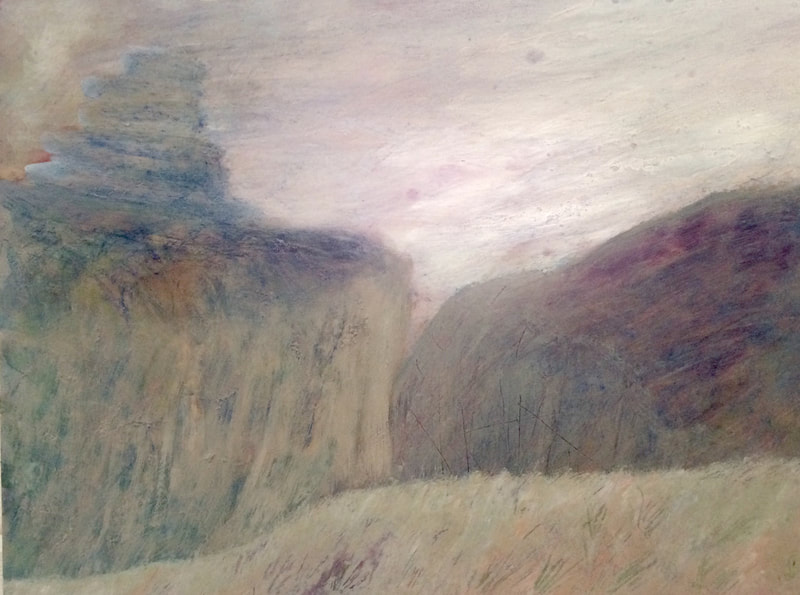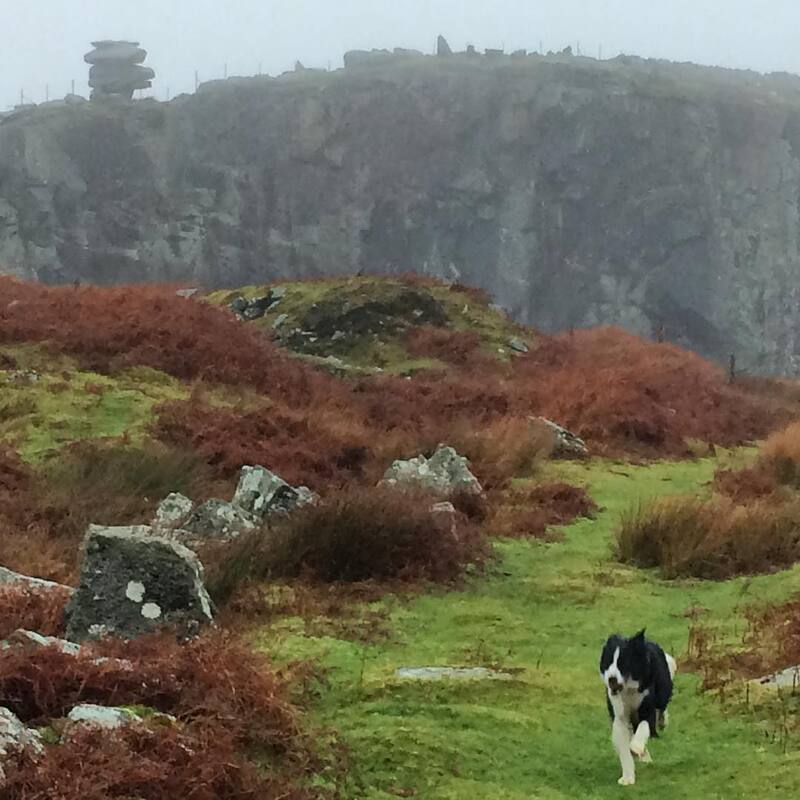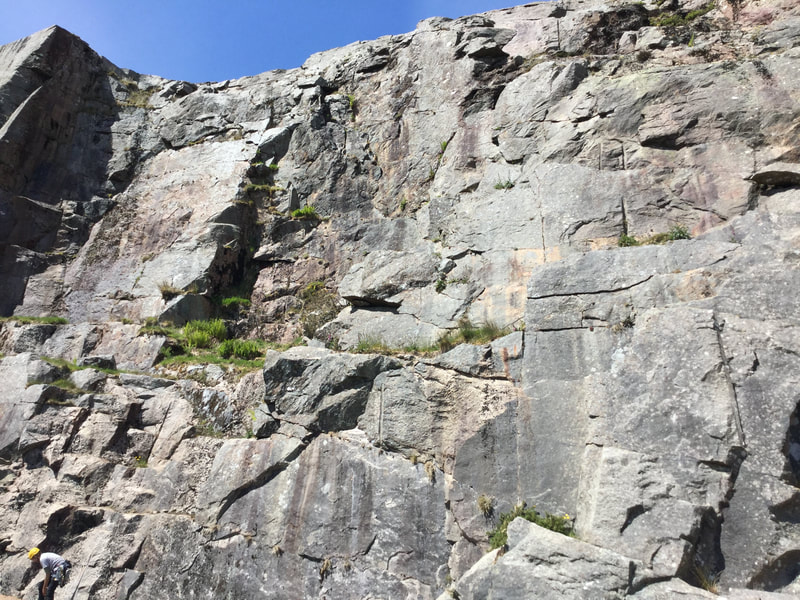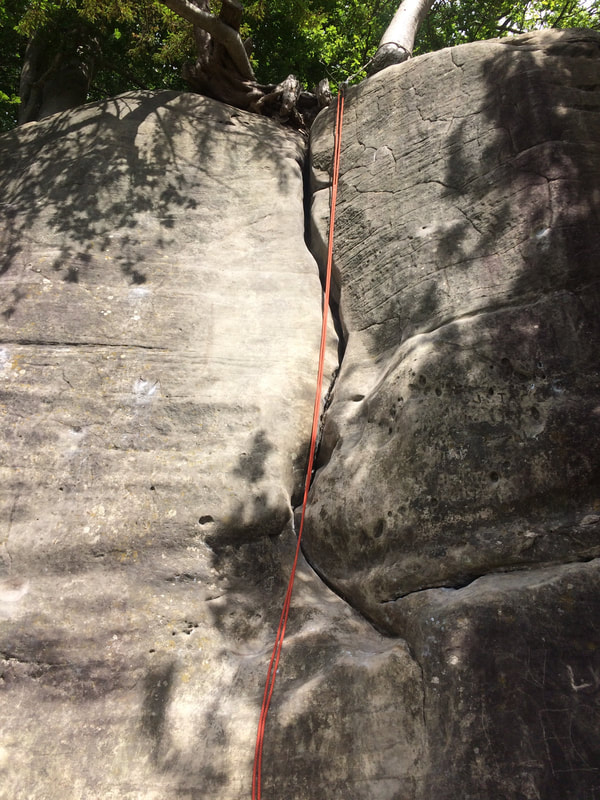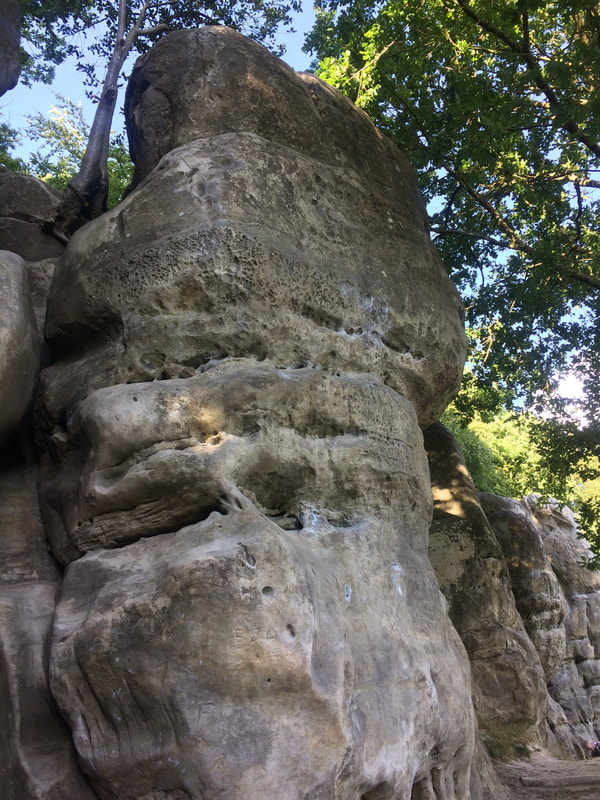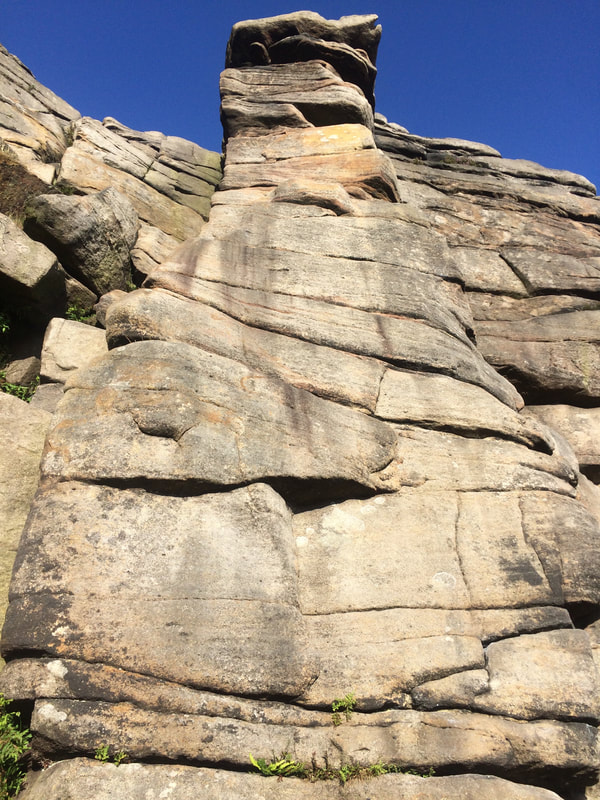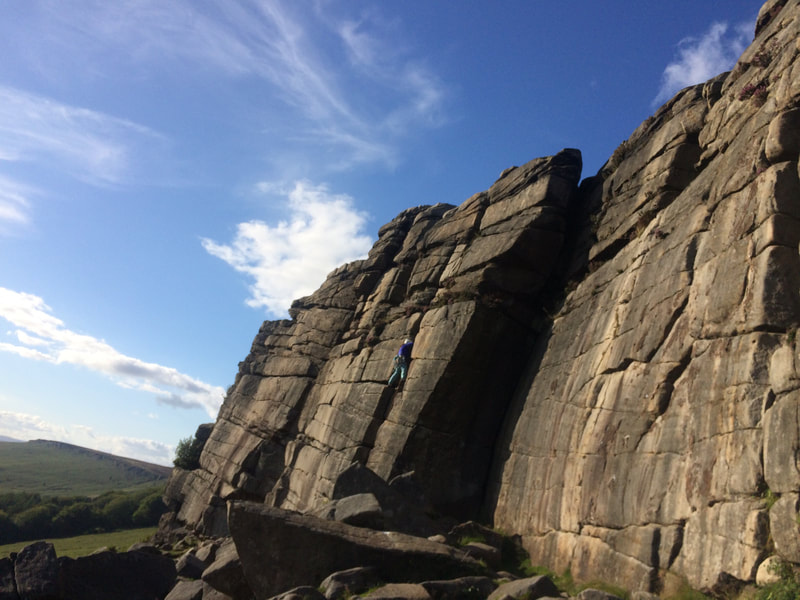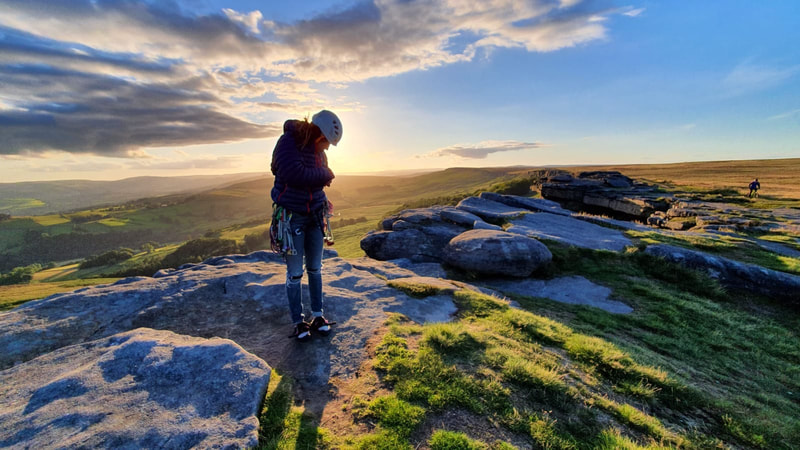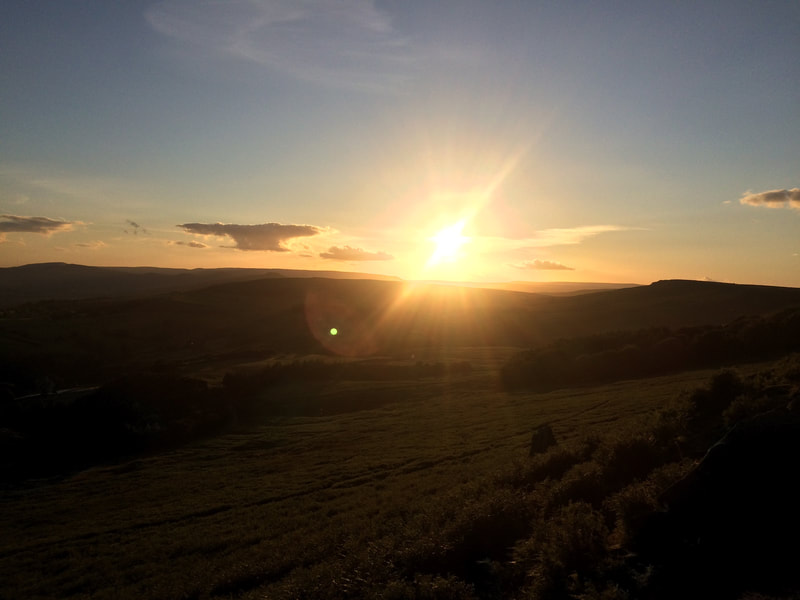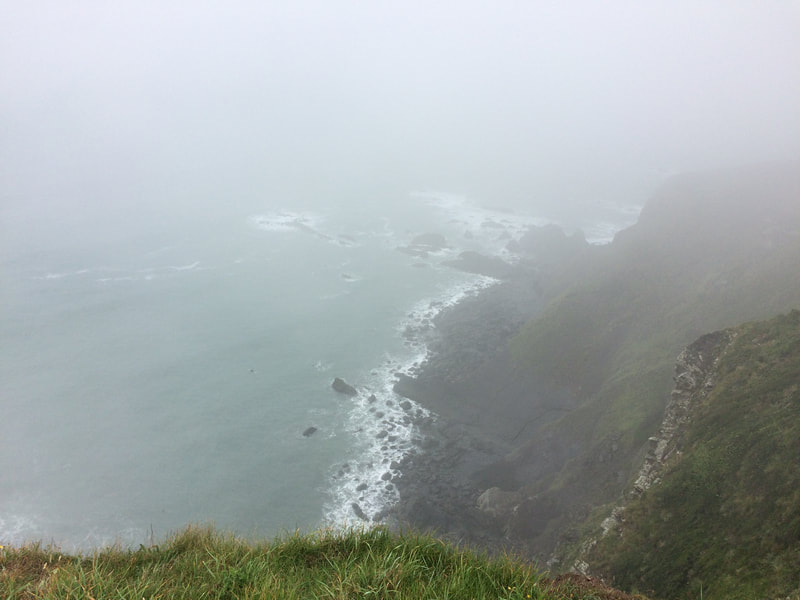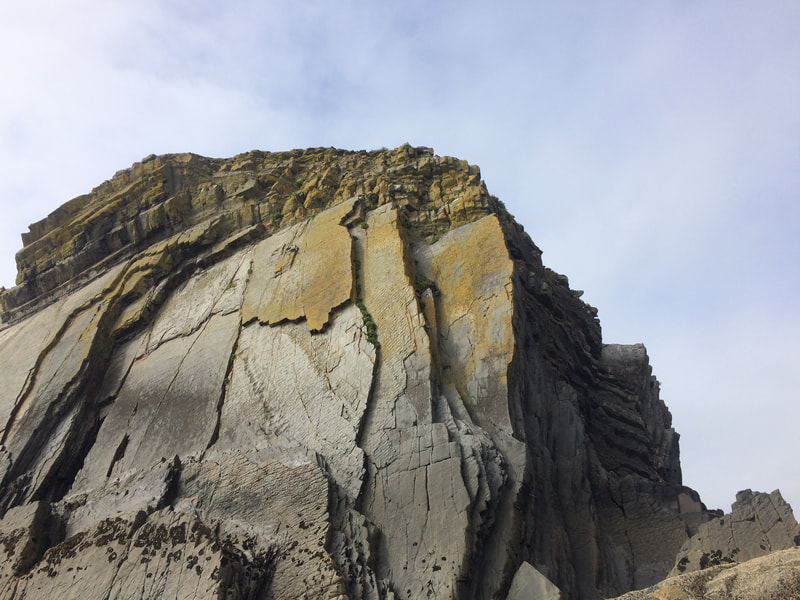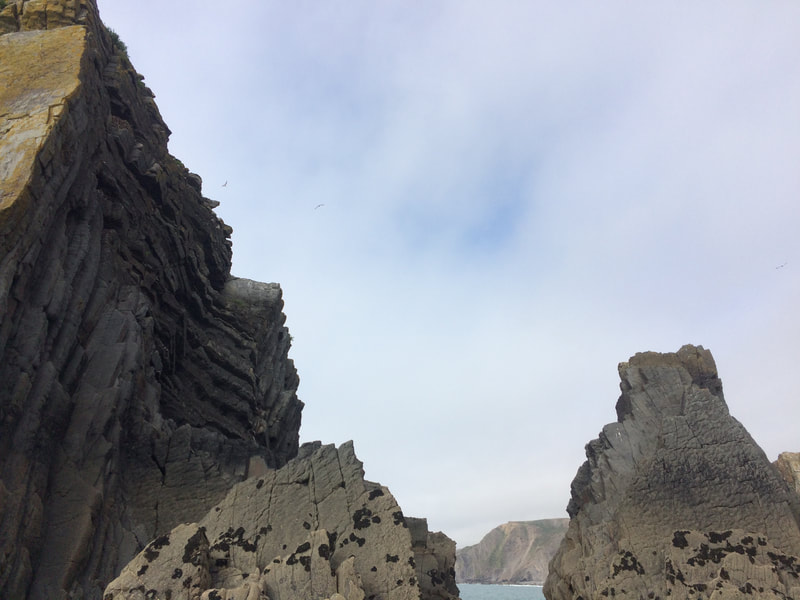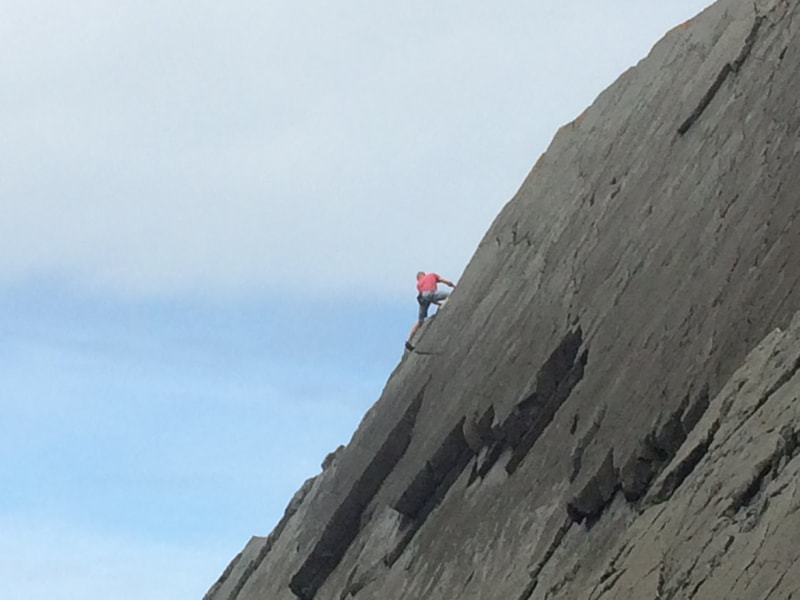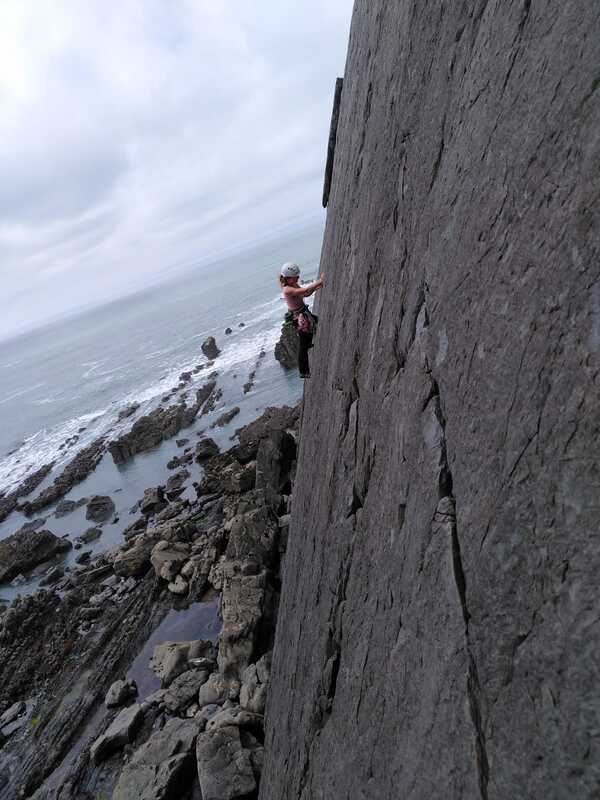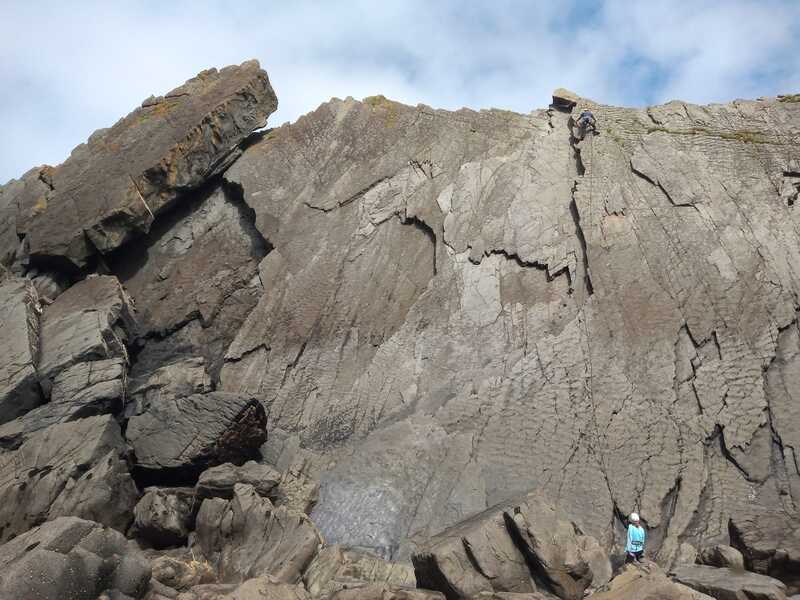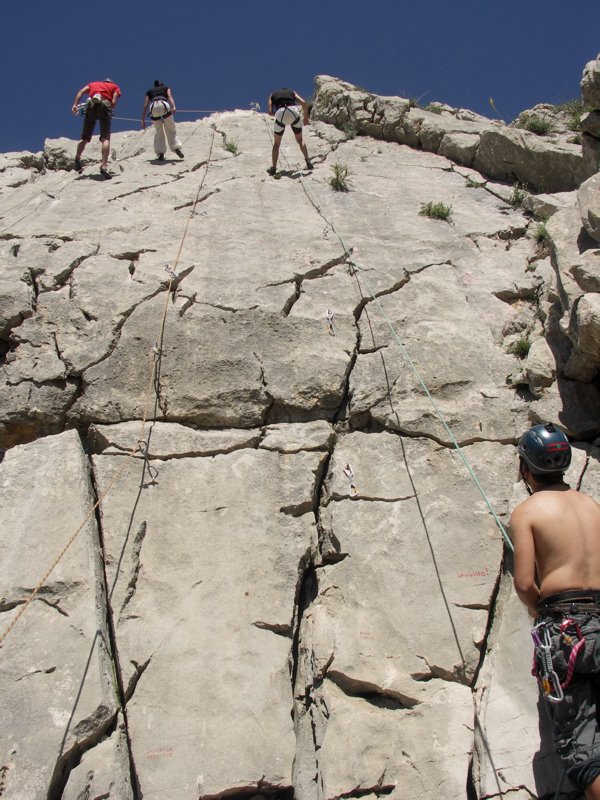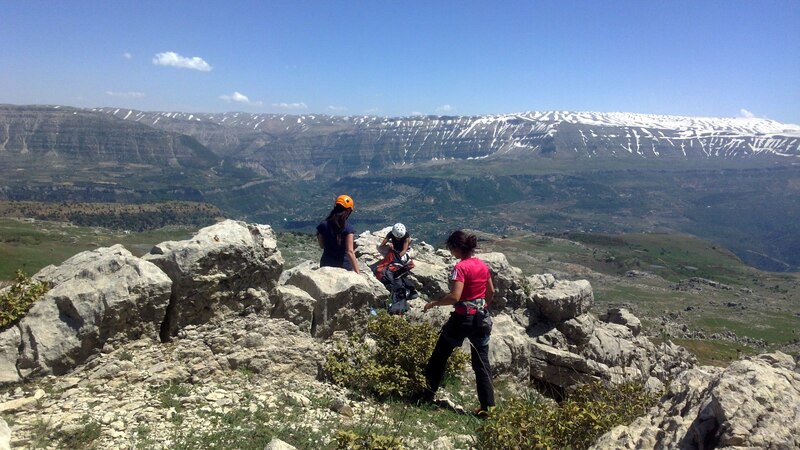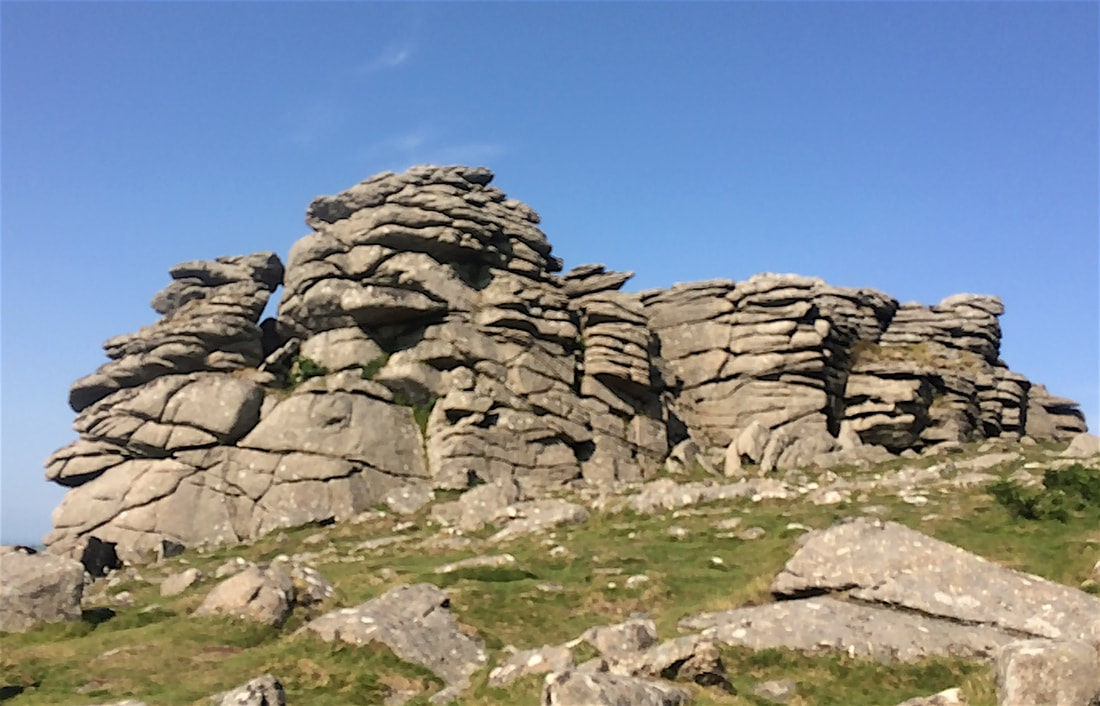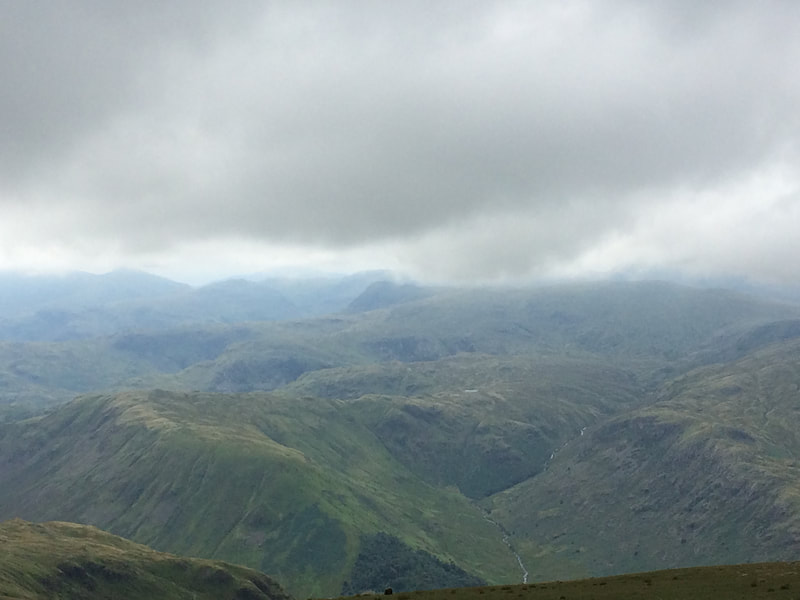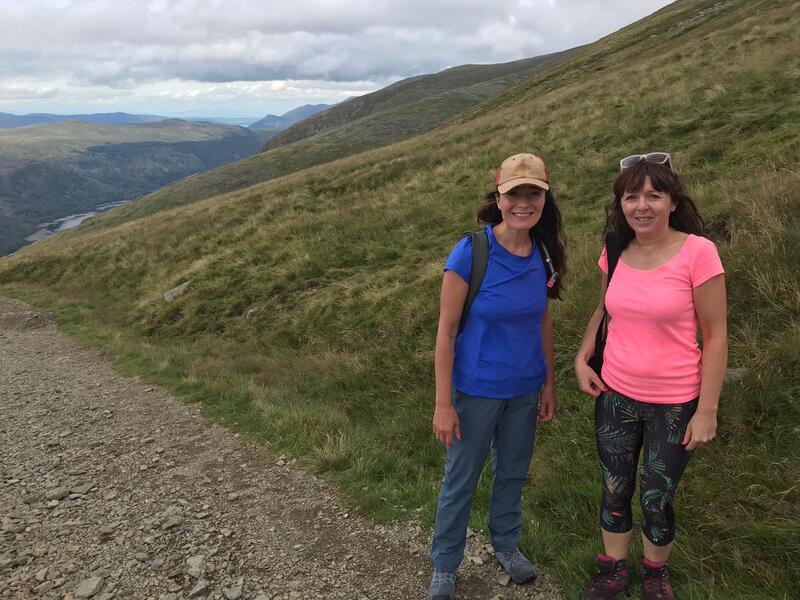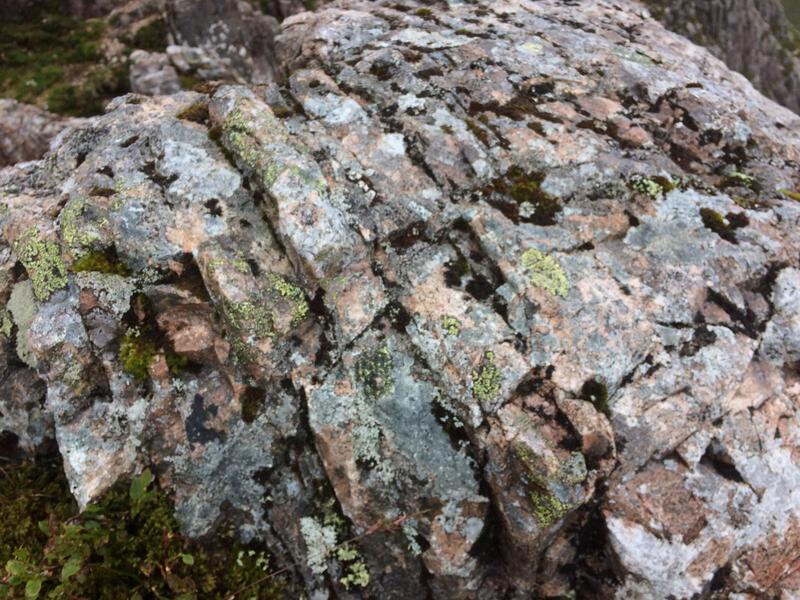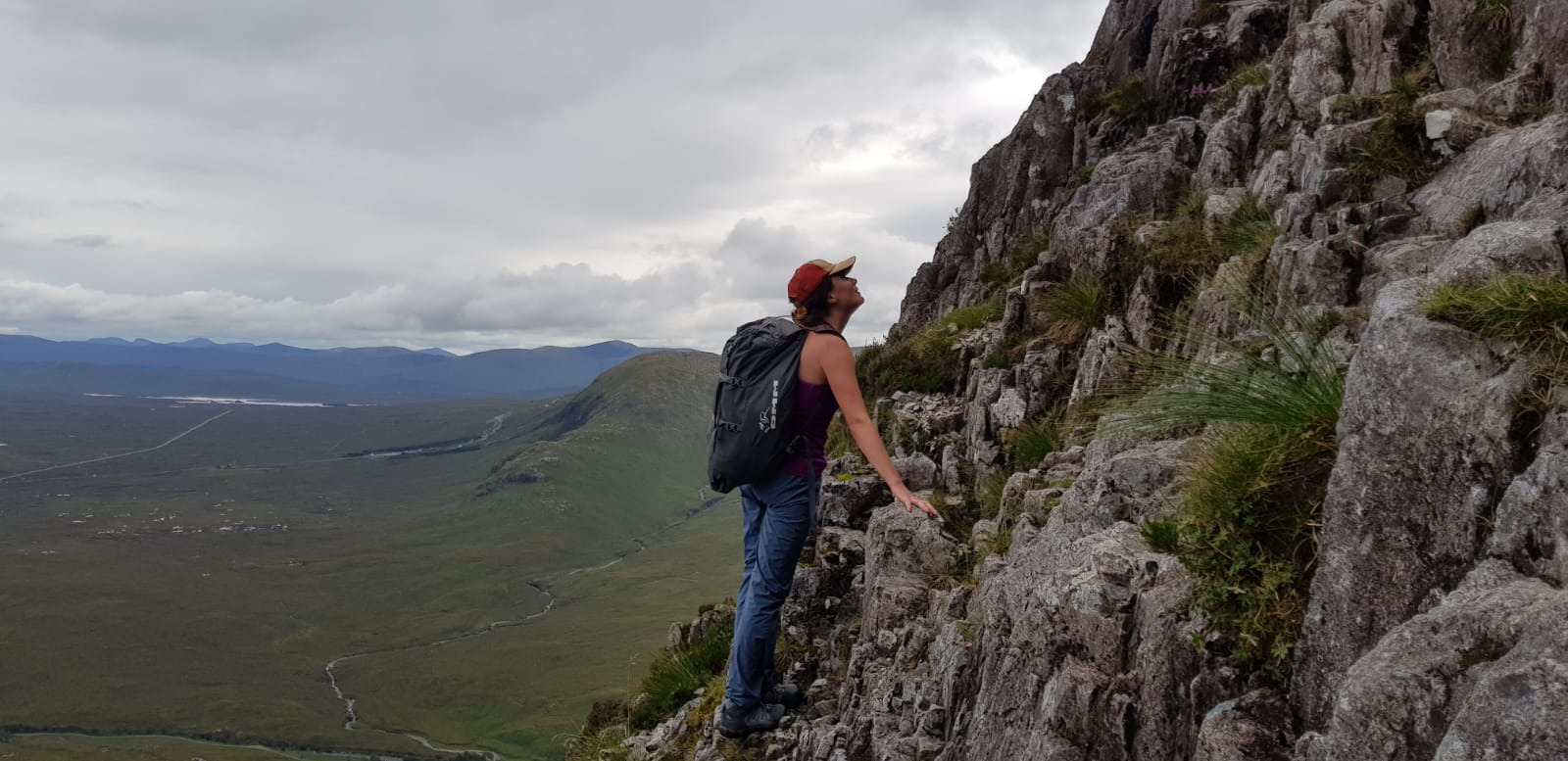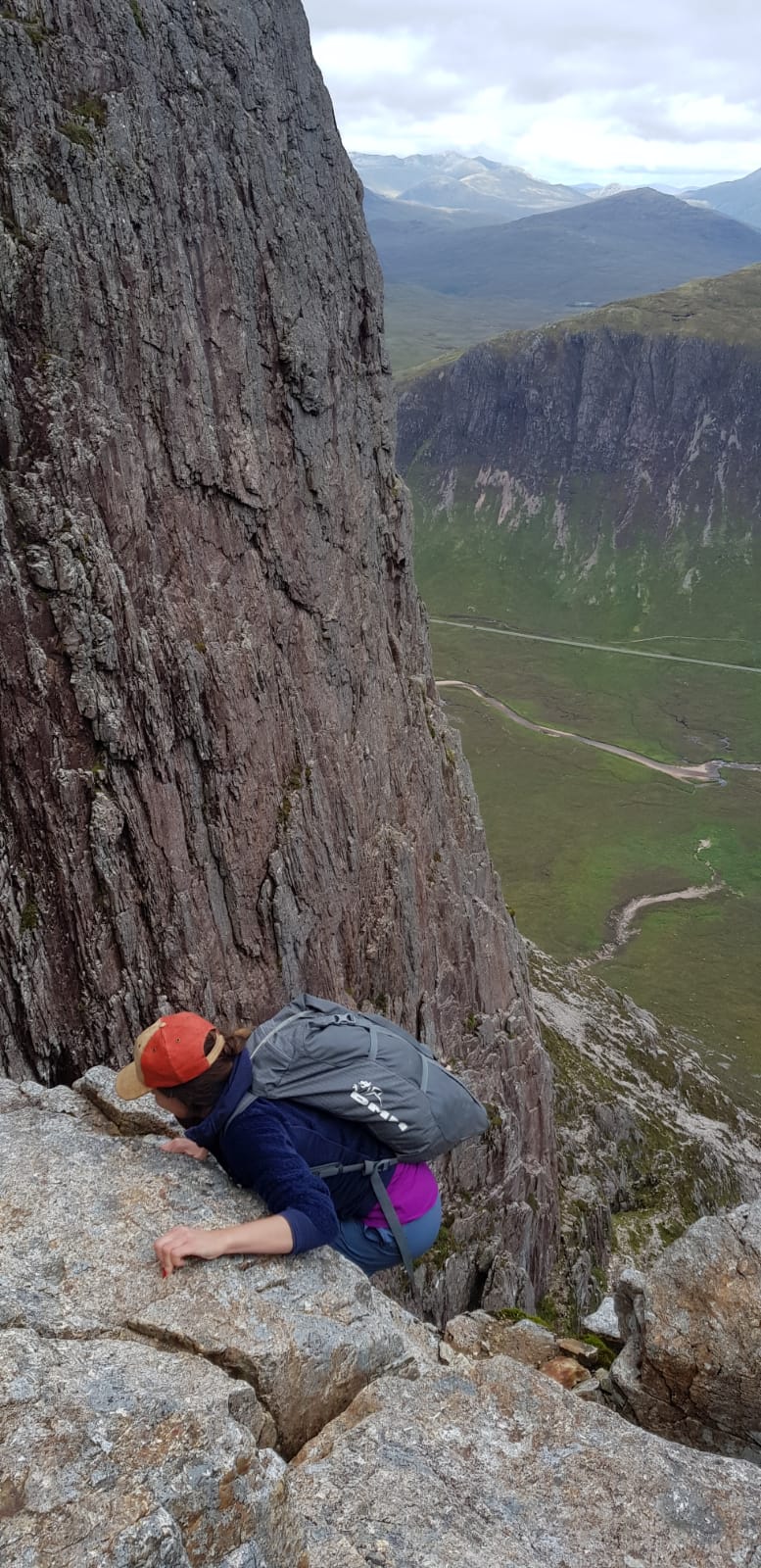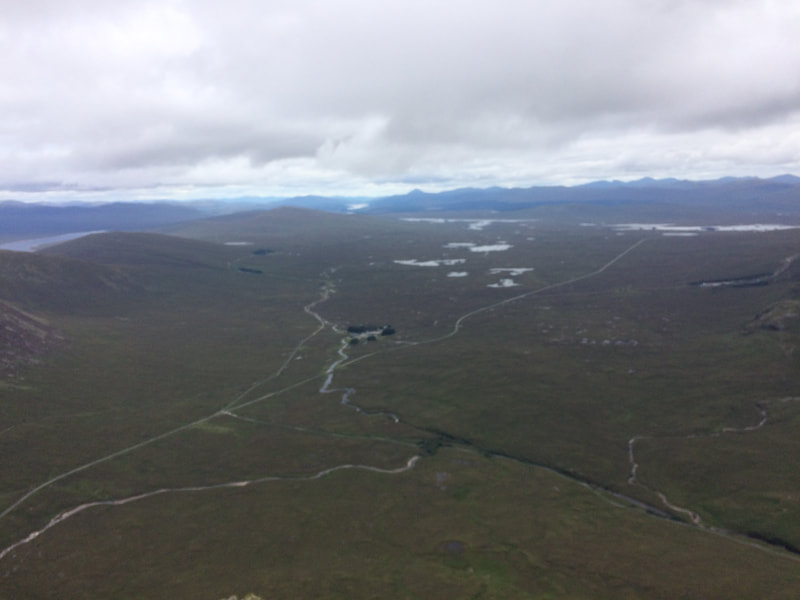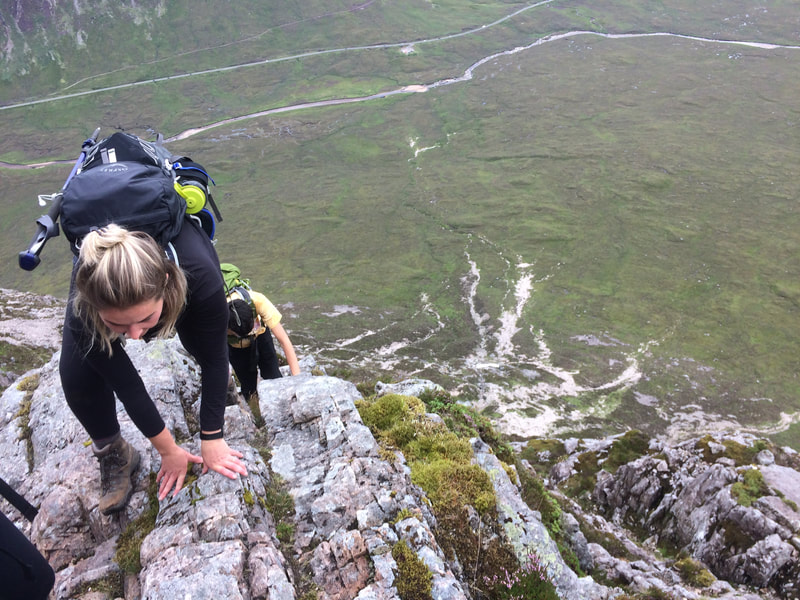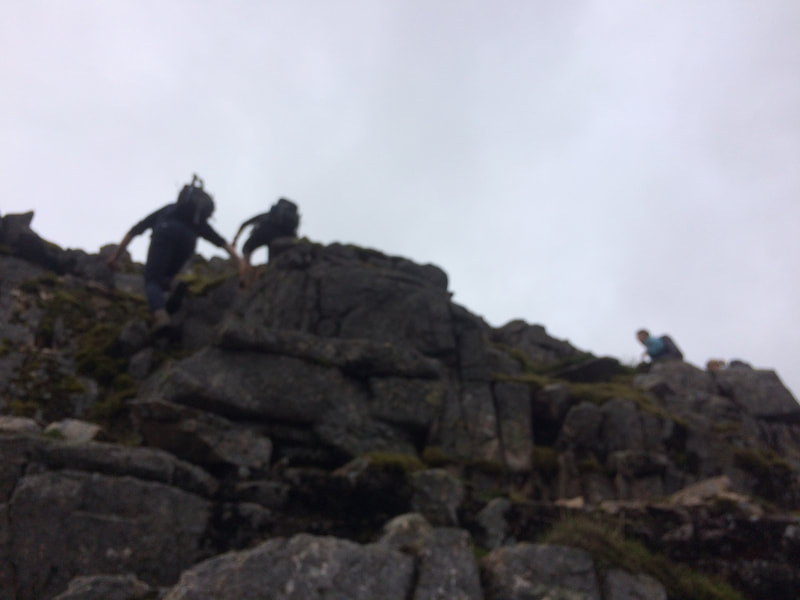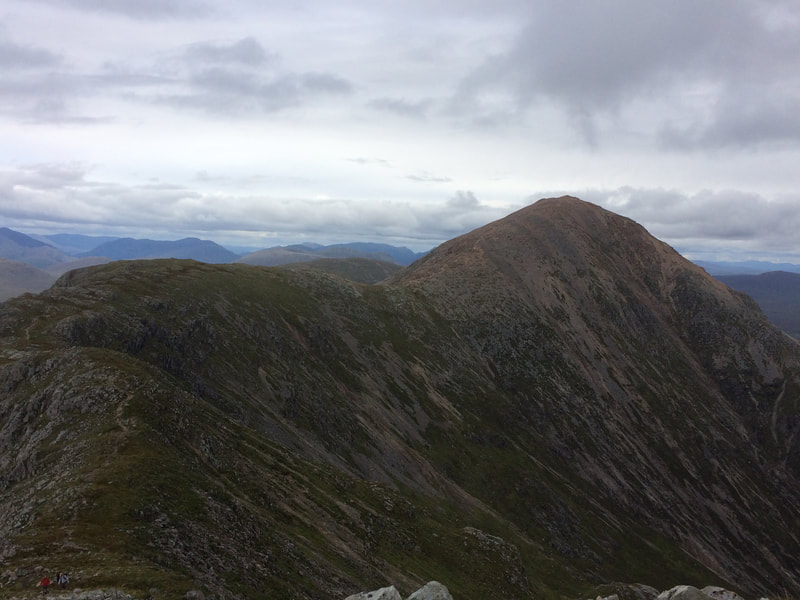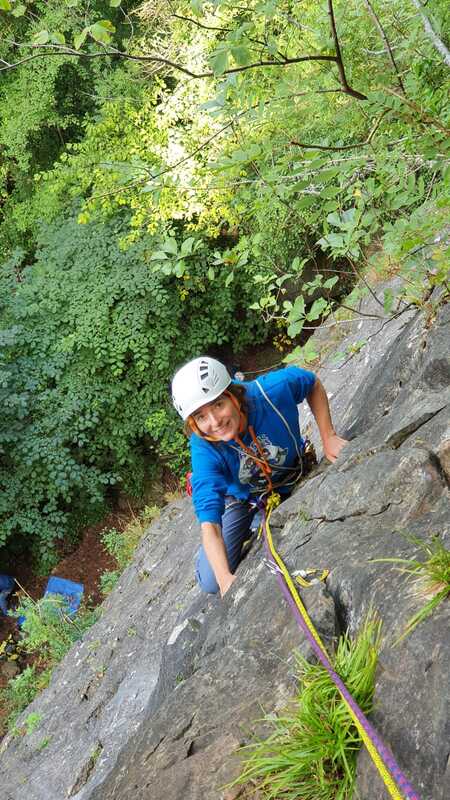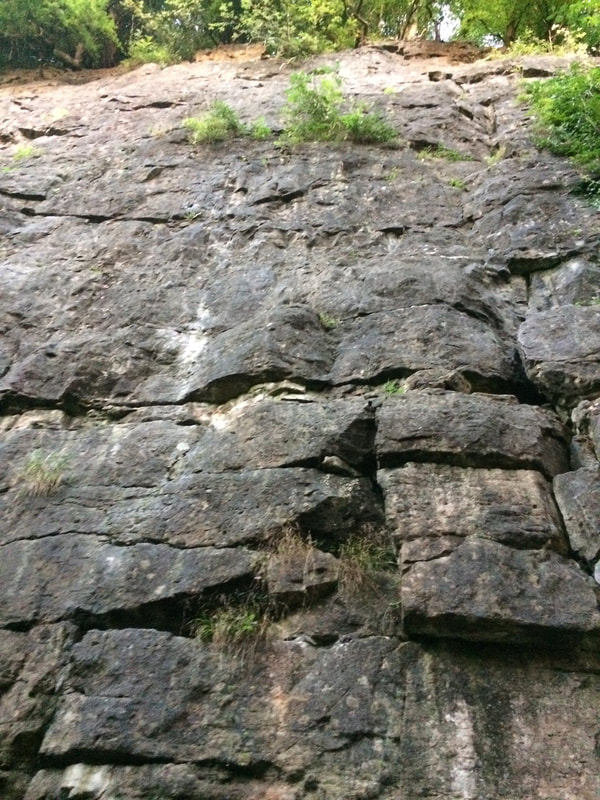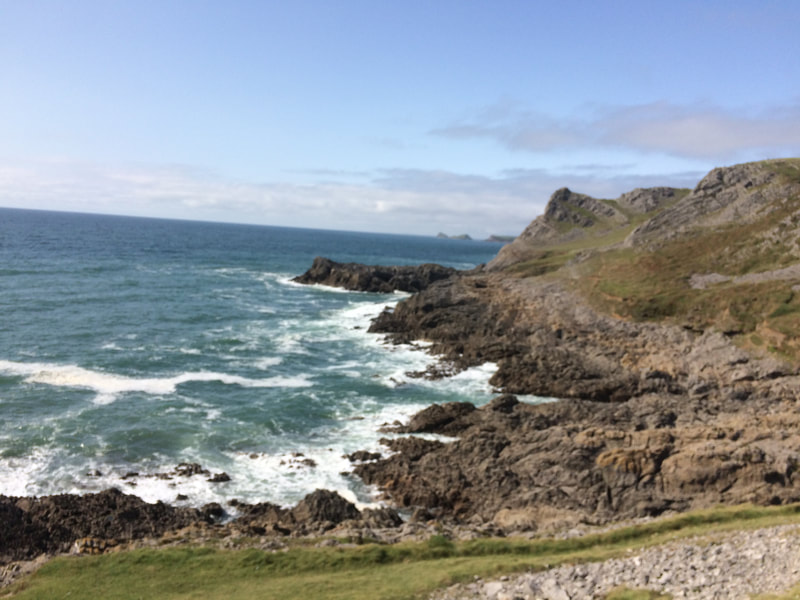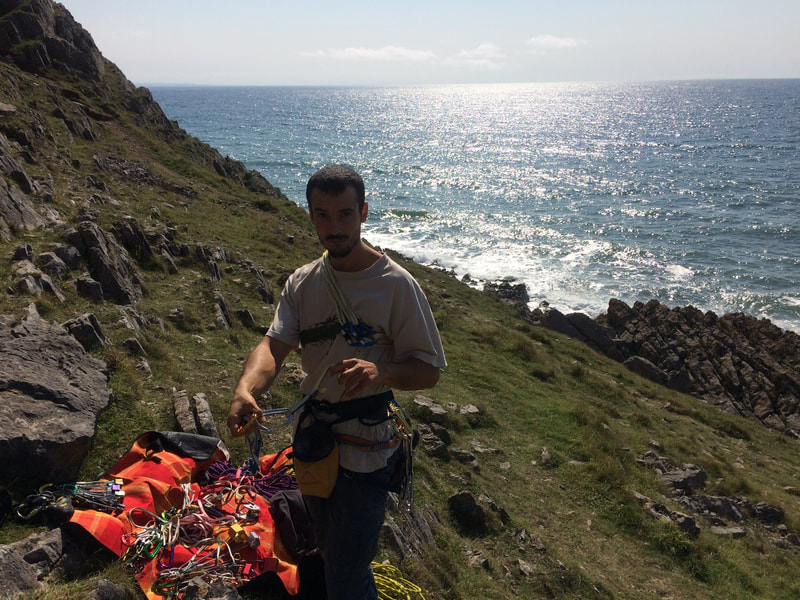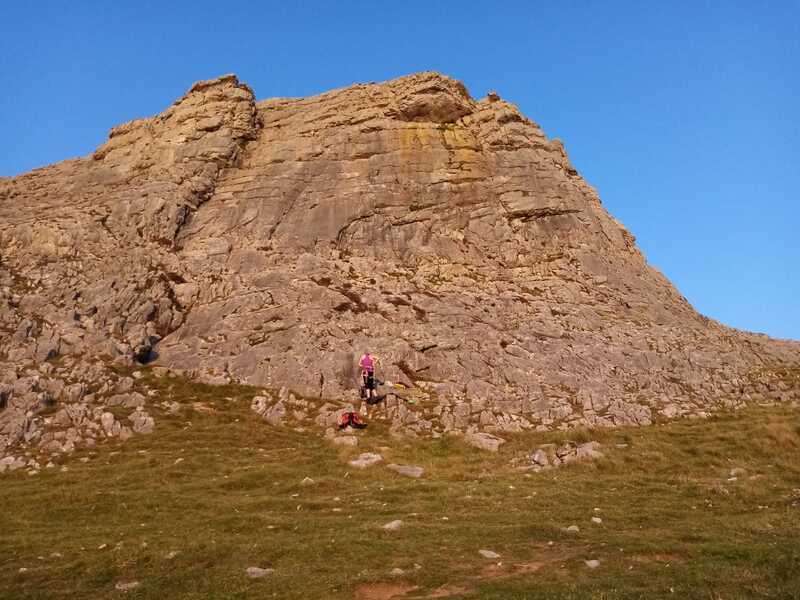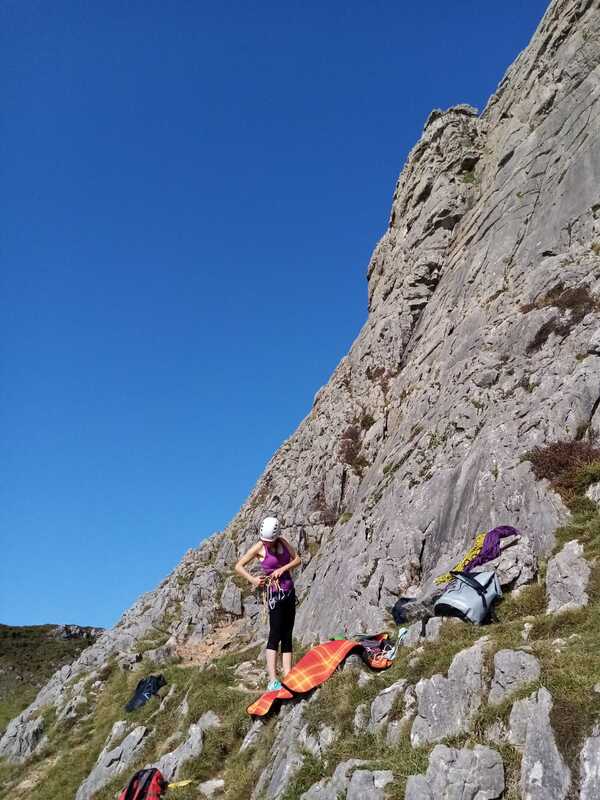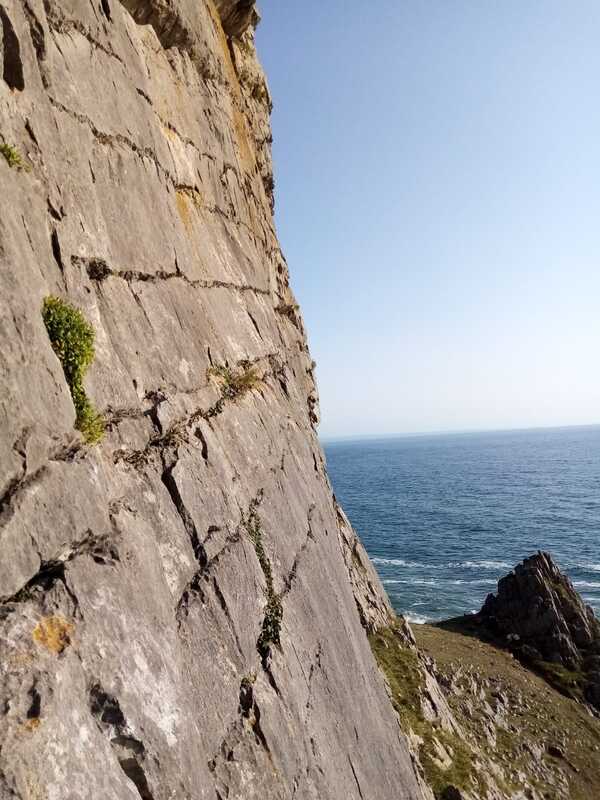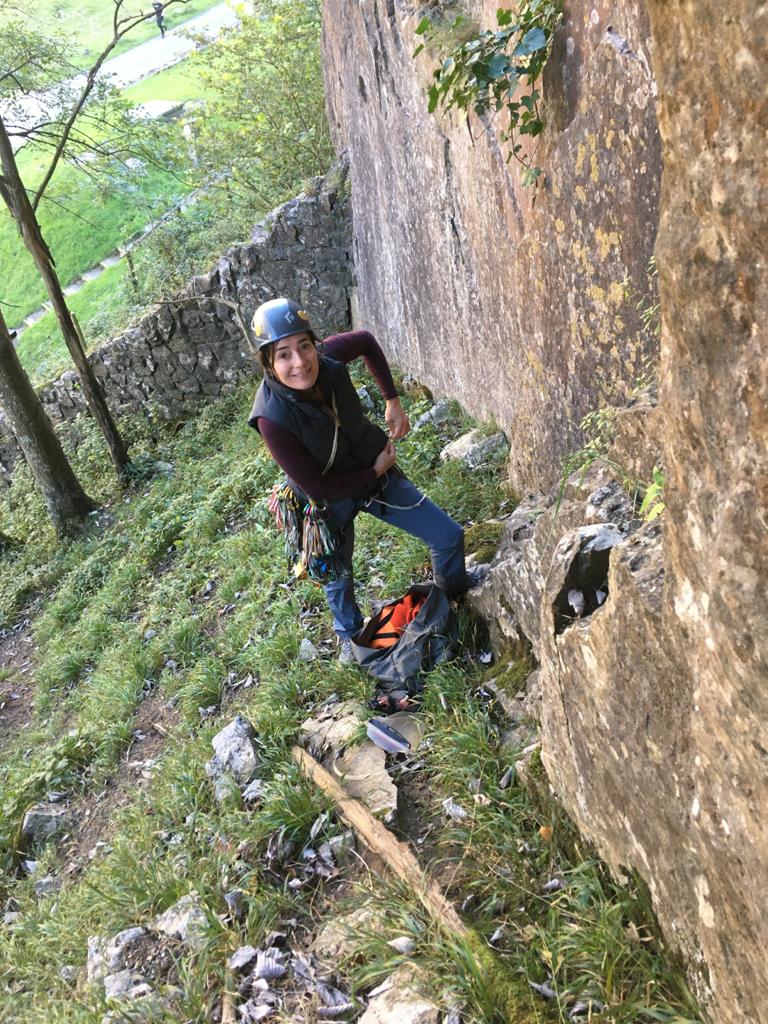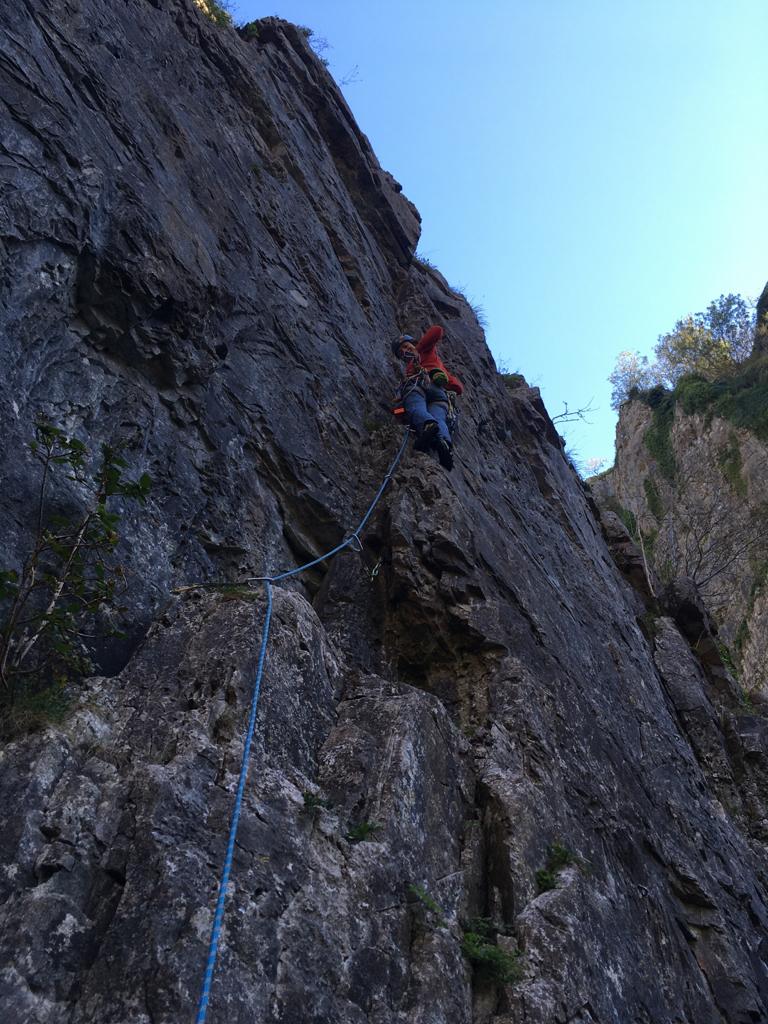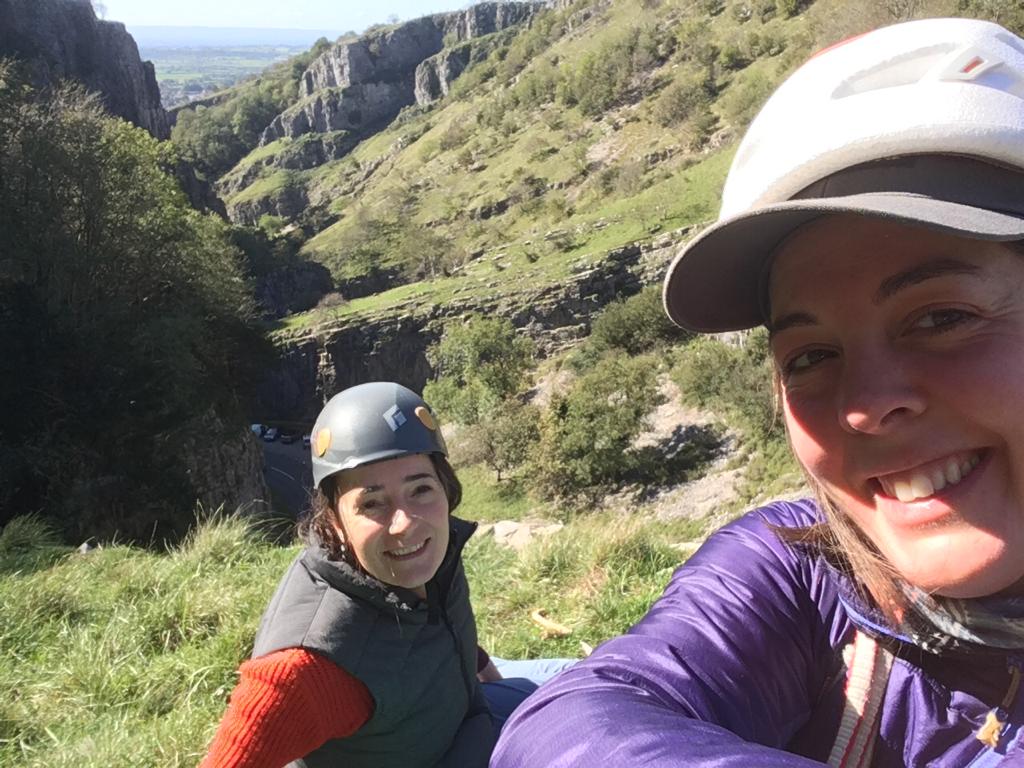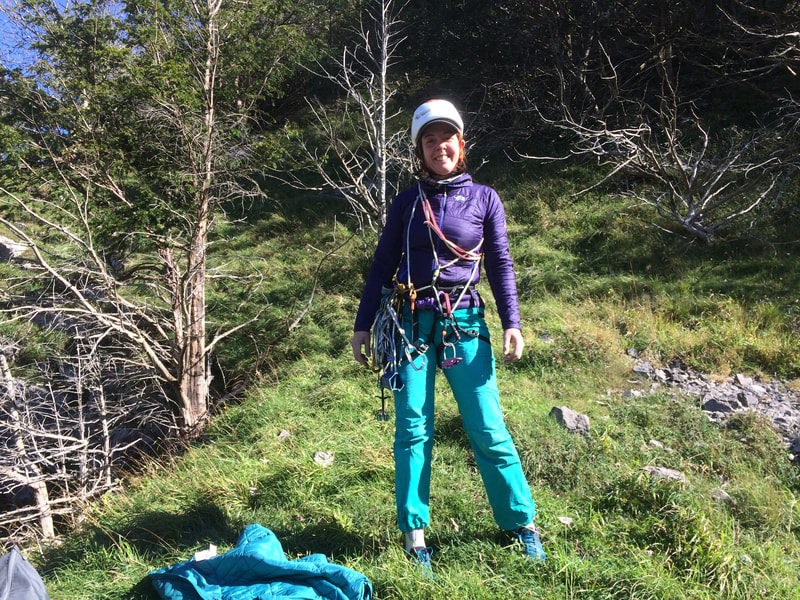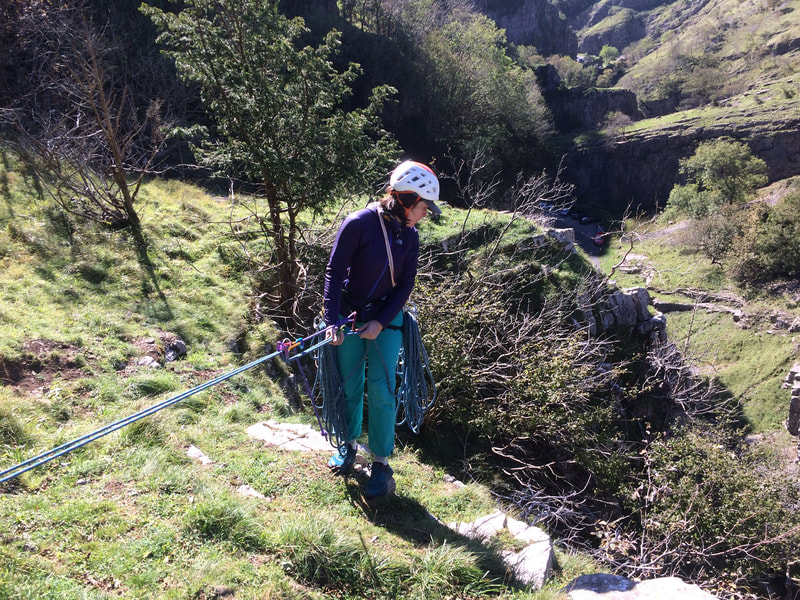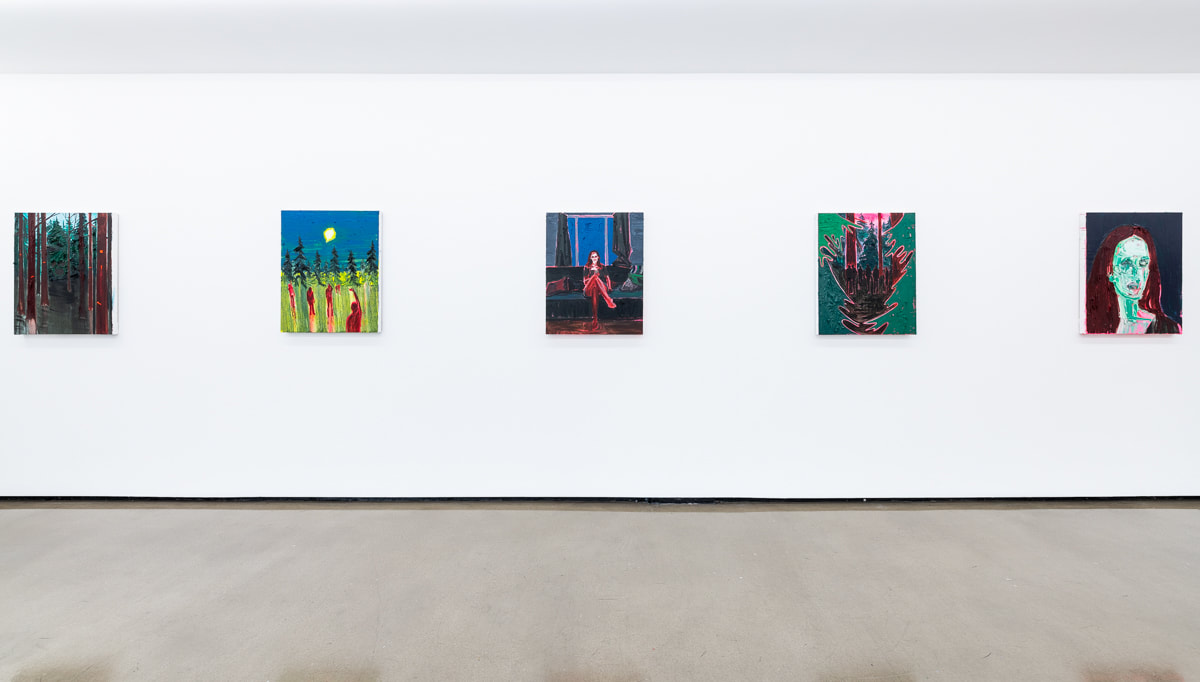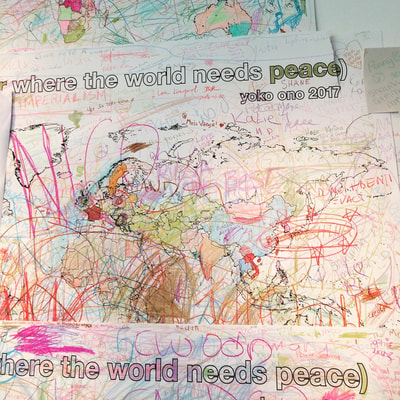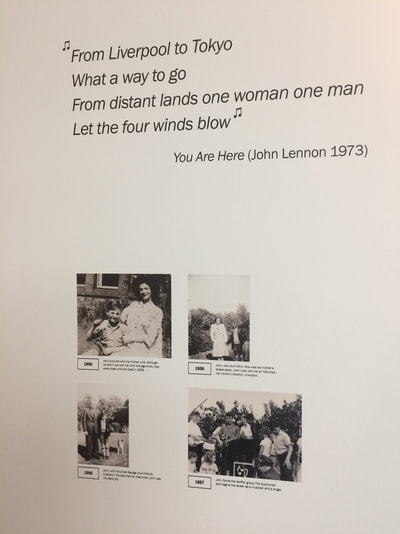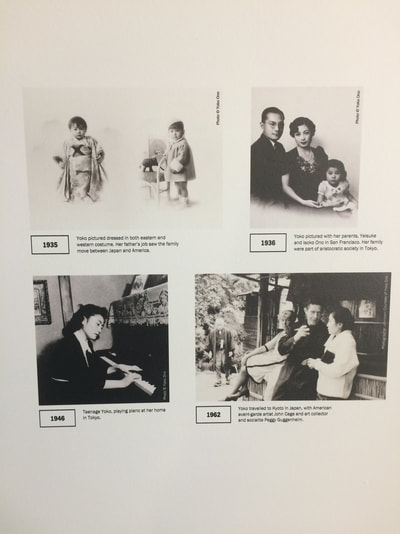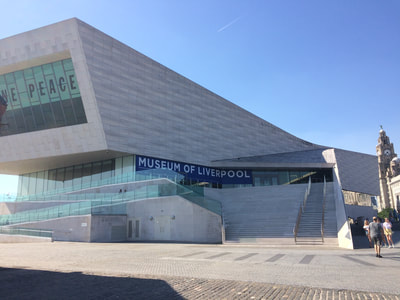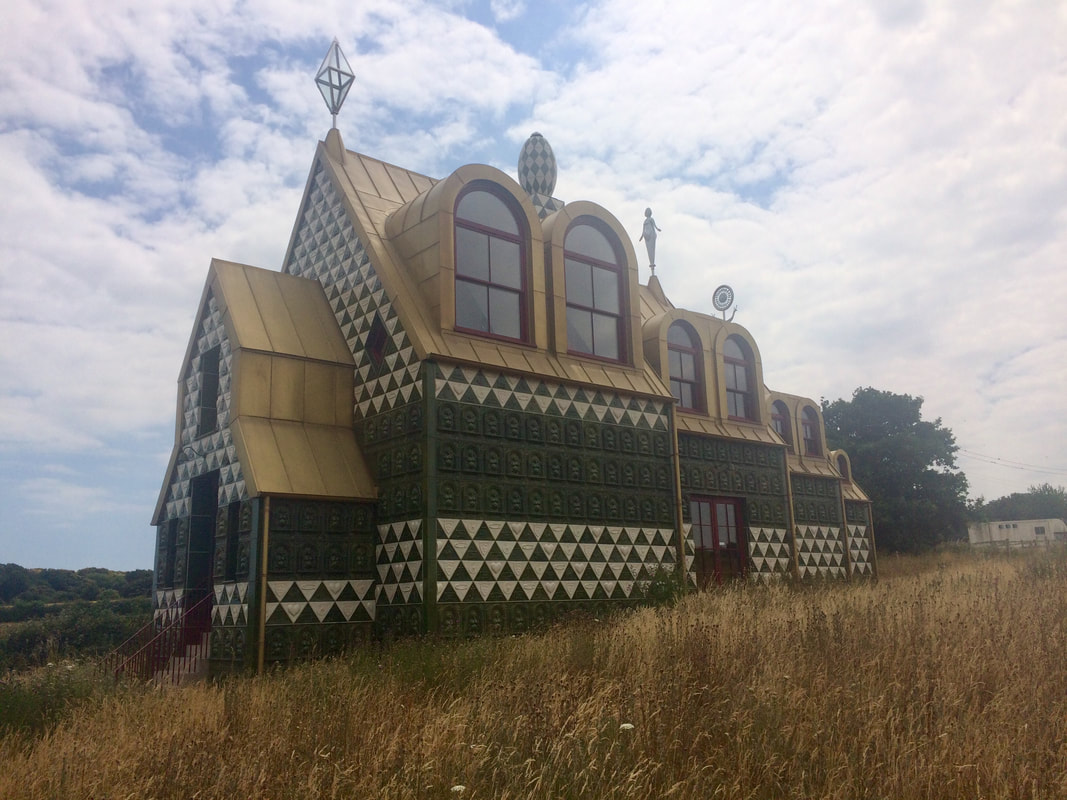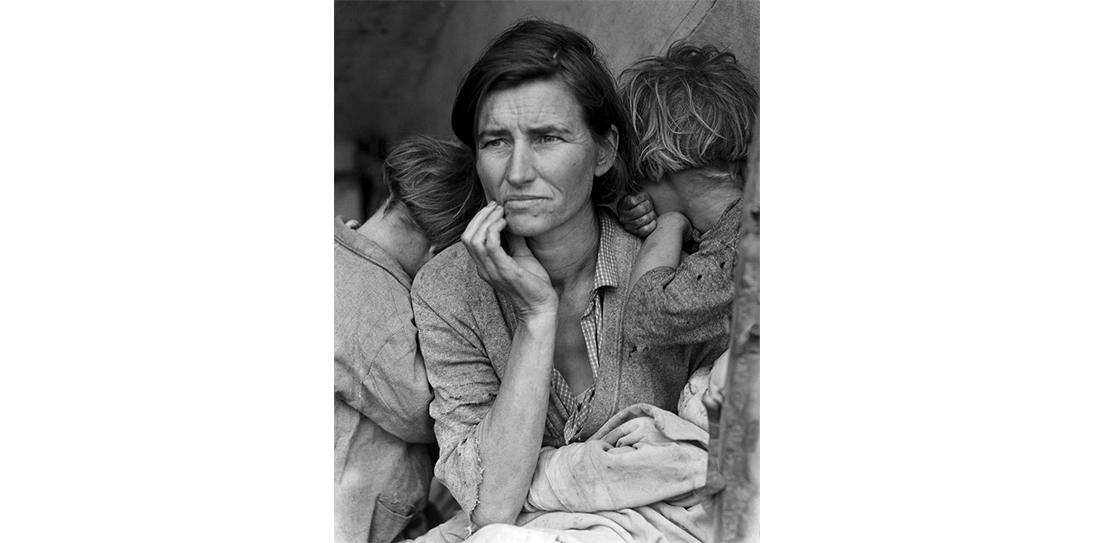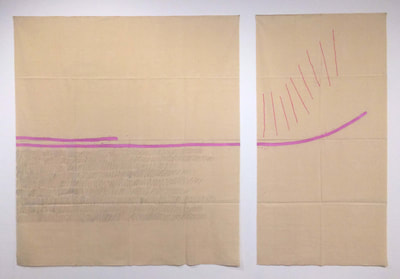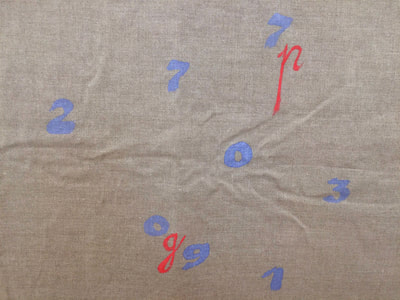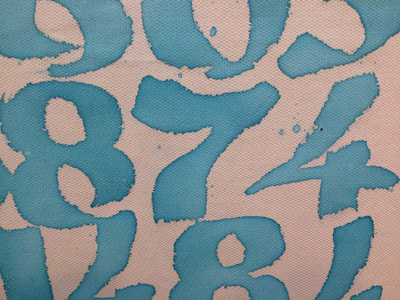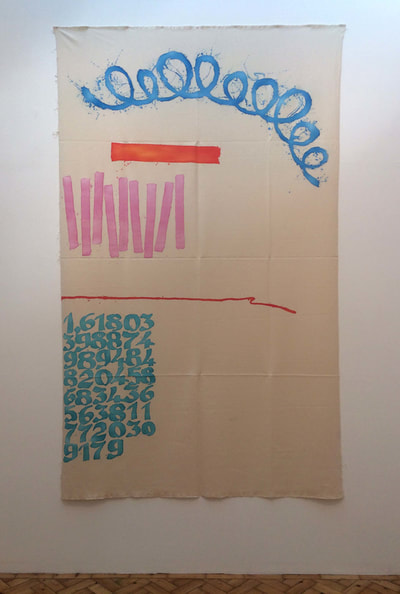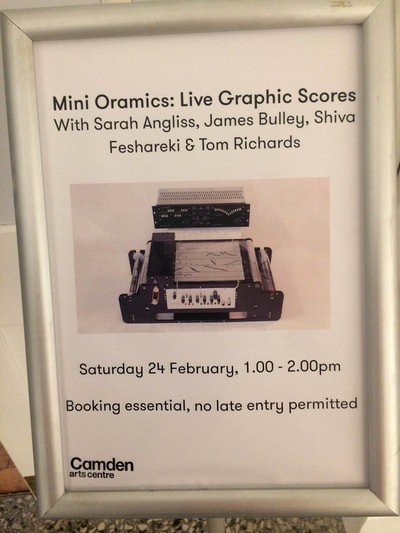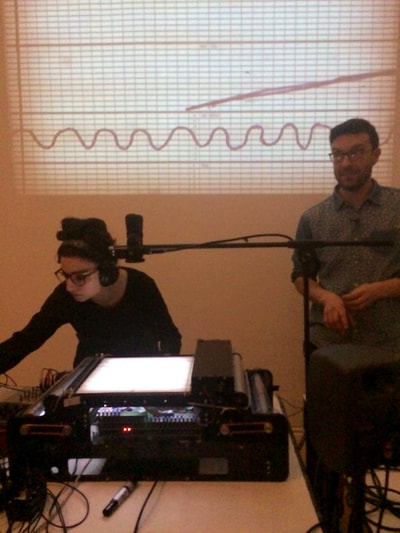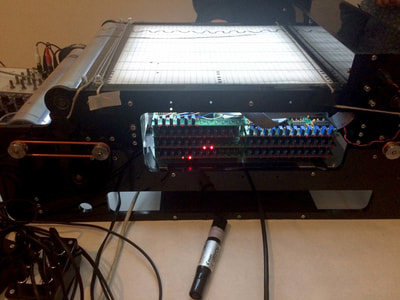|
Cheesewring, Cornwall, UK (Granite) Six Month Indoors Outside: A Stone Review Granite The last six months I've not been to see any any exhibitions, gigs nor films. We had COVID-19 kick in and everything shut. Cancellations flooded in and we all stayed in, other than when we went outside, so I can review stone on this blog today. My first port of call has been Cheesewring Quarry in North East Cornwall. It feels like home as my parents took me for walks there as far back as I can remember; it's named after the boulder perched overlooking the quarry, chunky layers of granite. Naturally for years I called it the Cheeseburger without trying to be funny. As with many quarries the sense of stillness is immense; after walking over moorland with sheep and wild ponies roaming around, often strong winds, the quarry has an echo of the wide winged birds soaring above, sheep bleating and a sense of timelessness: which buildings and roads have been pulled out of this Cornish wild? The sun sets over the main central face - you can lie down on a boulder bathing in this magnified warmth until every last drop disappears behind the rock face, ready to greet you on your walk back down along the open and sparse land. For the first time this year I climbed the quarry wall. In the past I've scrambled and played about climbing boulders low to the ground but on a course in North Wales (Rock Climbing Instructor training - you can consider it like a video camera for a photographer - tools in the toolbox) I met Dan, a friendly and accomplished climber who lives nearby, so we climbed the higher areas when lockdown eased. It's mainly trad (traditional) climbing, meaning there aren't bolts or ropes in place but you place your own temporary pieces by lodging them in cracks in the rock or putting slings over boulders and sticking out bits. It felt high and my legs were a bit shaky, but beautiful to be climbing the Cheesewring at last, this place that I've always loved and in adult years mainly visited with Lilly the Collie, who seems to get very happy there. Whilst climbing the main face a woman walked in with two collies off leads, I was a bit distracted asking her to put them on the lead whilst following Dan up the first pitch, they risk being shot if a farmer spots them chasing sheep. This was quite a heady climb, we had to traverse around a fairly exposed area 3/4 of the way up; I used lots of my therapist tricks to keep calm and keep moving - saliva in the mouth, deep breaths, reminding myself it's not not too hard just high and stretch around the corner. A couple of months later, having been out and about a bit further and climbed trad several more times it still felt quite daunting but much lower and more friendly. I was interested in how much our perception and memory influences our realities; confidence or lack of it is a real game changer in so many situations. The climbing is hard here, it's granite so pretty stable but the small cracks don't give a lot of choice / options for placing gear and though it's accessible it's also quite exposed and can get fairly slippery on the face in the sun. There are routes mapped in the Westcountry Climbs Rockfax guidebook and more in Cheesewring and South East Cornwall, St Ives printing and Publishing company. The latter has routes mapped for bouldering the actual cheesewring feature; which I was surprised by. I would never do this, it's old stone with ancient lichen and is a striking landmark - I wouldn't blame a local for striking me if they caught me standing on it, much as the farmer has every right to shoot sheep chasing dogs! Dogs chasing sheep. I meant that as in, she is a sheep chaser, a sheep chasing dog, but can see it could be read another way. I'm looking forward to exploring that rock face more, it really feels like home and an anchor point for me in many ways. An art project or set of artworks spanning a decade started there; I've painted it, written poetry linked to it when I first moved to London.. recognising the stone in monuments and famous buildings had moved from their natural environment too. Quarries often referred to as scars on the landscape form worlds within worlds if you let them. Harrisons Rocks, Kent, UK (Sandstone) Sandstone Speaking of London, from there I have been able to make day trips to sandstone, in Tunbridge Wells. As lockdown relaxed we were 'allowed' to meet another household outside, but with severe limitations which ruled out lift sharing. I remembered a fantastic climbing partner Adrian, I'd met there a few years earlier, lived nearby so we climbed at Harrisons Rocks and some other sandstone crags in the area, which was a very different situation... in Cornwall there was only ever one other pair climbing and usually none, this sandstone is close to London and with all the gyms closed a lot more people were there than usual. Always popular now it had large groups of people bouldering and some climbing without arranging their ropes in accordance with BMC guidance. Adrian is an access rep for the BMC here, so I learned a lot and it was a great way to start rebuilding my confidence having had most of 2019 off with an injury and then lockdown. Sandstone climbing is all on top rope or solo (no rope) as bolts and trad gear would break the rock surface and be useless; the rope is anchored at the top, taking away a lot of the work of trad climbing, or sport climbing where you clip your rope in along the way. It can be more technical, with less obvious holds for your hands or placements for your feet. I was nervous even on top rope, whereby if you fall you really don't go anywhere; my instincts were telling me I should not be perching up high on something so easy to fall off, following all this sedentary time on the ground. I started to trust my feet and the rope more, get a little stronger emotionally and physically and learn some helpful moves - jamming my hands into cracks and pulling up on them and pushing my feet against the flat surface of the stone, using my weight and body angle to stick. One of the crags closed during this time as so many people had climbed it that the surface of the rock wore away exposing less dense sand underneath. This is why rope placements are so important; you place a static rope (climbing ropes have a bit of stretch in them) at the top, then carabiner - metal locking ring - and run the rope through that so it dangles over the edge of the crag without wearing away the top layer. Without this there probably wouldn't be Southern Sandstone climbing opportunities for much longer. Funnily enough what we call top roping is bottom roping, when the person holding the rope is standing on the ground belaying ; it's top roping when they sit on the top of the climb and belay you from there with an anchor to support them, but most people call it all top roping if the climber doesn't have to clip and has a partner / rope to catch their fall. I'd not really seen the appeal of sandstone in the past, being from Cornwall with sea cliffs and also climbing a lot in Spain - I like long remote routes that are up and away - not technically difficult but challenging and fun adventures. Climbing with Adrian, who gave lots of useful tips and encouragement as well as being enthusiastic himself meant it started to click and I began to really enjoy the challenge and sociable nature of these routes, bought a climbing guide, which I had fun spotting my pals in: Rockfax Southern Sandstone Climbs - Daimon who made it and his partner Emma are friends from the local climbing gym (The Reach) so lots of locals modelling the climbs! For the first time I became interested in ticking routes off and checking the grades; I would do that in a gym but less so outside. I had noted some in the past mainly for instructor assessments, but I started to find a satisfaction in knowing what I'd climbed and reading what others thought of it; it was compelling to learn more details and plan ahead. At the time of writing exciting potential is opening up through this interest and some beautiful guidebooks. Stanage, The Peak Distract, UK (Gritstone) Gritstone Lockdown eased further and we climbed Gritstone in the Peak District, which was more familiar - closer to the granite of Dartmoor that I grew up with, but steeper and higher so trad again rather than bouldering or deep water soloing (DWS), which is popular in the Westcountry. There is plenty of bouldering in the peaks but if with a climbing partner I prefer to do routes. After a couple of days I started to remember what I liked about climbing, muscle memory kicking in and starting to let my body think along with my head. It became easier to arrange my equipment and pieces of the jigsaw clicked together. Culm Recently I also explored Culm, on the North West coast of Cornwall. It's a type of sandstone - a mix slate and limestone too - unique to the area, quite crumbly but plenty to hold onto and it doesn't scratch the skin like granite. This was trad climbing again with Dan and our mutual friend Will. Will is a childhood friend and the first person to take me climbing, I remember admiring his beautifully engineered gear - the shiny, colourful clips and ropes placed in rural spaces looked a bit like my artwork. His enthusiasm was catching and I was lucky to have him as an early climbing partner, choosing gorgeous routes that were challenging for me but doable. It's a pity when someone feels they can't climb or climbing is not for them after one or two tries; I often wonder if they needed an easier route to start on, along with encouragement over even constructive criticism in the early days, with someone else doing the work to keep them safe while they get a taste for it. The sea cliffs this time (August 2020) were stunning, refreshing, a good hight so you can have a decent climb but not so high it takes all day. Some anchors already at the top (slings and carabiners strategically left by previous climbers) and sling ready rocks simplified things at the top, with the calming sound of crashing waves. This is another environment where you can expect to be the only people on the beach / crag and there are a variety of grades so the newbies, starting backs, low confidences, or experienced and keen to climbers all have something to choose from. Still feeling quite amateur I was now able to enjoy the movement and rock, the setting and space whilst placing gear on trad leads (with good feet!). This weekend fell directly after the terrible bomb in Lebanon. I don't think it's a coincidence that the wind was on my back getting to Cornwall and onto the cliff. I felt some guilt in this, knowing friends and families of friends, were suffering so much. Though feeling powerless I did offer free EMDR for groups in Beirut online and learned what I could, looking at where I could help. I also knew sitting at home biting my lip wasn't going to help anyone. North East Cornwall, UK (Culm) Limestone It's also no coincidence that the first long sport climb I led was in Lebanon, the soon to be Lebanese Climbing Association took me under their wing and out on some beautiful days in the mountains on my days off; I was setting up art therapy groups in Beirut in 2012; one of the most enjoyable projects I've done and one of the steepest learning curves. The mountains are a consistent treasure for Lebanese climbers in their politically complicated and geographically beautiful country. My climbing partners kept me safe, gave me tips, encouragement and generously shared this joy. Next is North Wales, now the Welsh border (recently closed for the first time I am aware of) is open to England again. Laqlouq, Lebanon (Limestone) Dartmoor, Devon (Granite) Closing on a Dartmoor image of course - trusty tors - great for scampering, bouldering, trad climbing, soloing and lunching. Being mindful of coronavirus by working online, with self contained travel, mainly staying in friends and families gardens / drives or isolated spaces, hand gel, face mask for shops, minimal food, drink and lift sharing between households; seeking out quiet or deserted areas, outside. Community website with signposting to support Lebanon: helplebanon.carrd.co Update: Limestone and Rhyolite
Following this there was a very long spell of rain in North Wales, so I went to the Lake District instead and hiked up Helvellyn with my dear friend Abbie Evans, then Scotland to scramble up 'Curved Ridge' in Glencoe (Rhyolite, a volcanic rock similar to granite) which I was delighted to do with my old pal Jack Brindley who I'd not seen in years, along with his partner Susie and more than a few friendly Scots; Adrian Paisey and I went trad climbing again, this time in South Wales - the Wye Valley (conglomorate sandstone / limestone, I think... ) and I also went trad climbing a bit further along in the Gower (limestone) with Jonathan Ruiz Esquius, who I met this year purely as a climbing partner. The first time I did a call out on a facebook climbing group! This fit in nicely with renewing my outdoor first aid course with 'Green Ideas' north west of the Brecon Beacons and was rounded off by trad climbing in Cheddar Gorge (carboniferous limestone) with my more regular pre-Covid climbing buddies Sara Ortiz, Emma Harrington and Daimon Beale. I preferred the crashing waves of the Gower to the cars racing through the gorge and echoing all around. I also prefer exposed climbing to mean a lot of open space around and beneath you, to racing cars, motorbikes and groups of people. The rock and companions were great though. All of this enabled much valued human company in the great outdoors with a focus away from politics and health, whilst the non-commercial galleries remained closed, there weren't music gigs and and my work was online. As well as viewds, heards and seens I'm thinking to log some reads here too.
That feels a lot more personal. Hmmm. >Some minutes of my eyes waltzing across bookshelves in front of where I am sitting< Nope I'm not going to. Let's see if something really stands out that I feel like sharing. I'm surprised it feels so sensitive. Books / quiet reading time are perhaps my sanctuary. Working backwards, sort of, with viewds heards and beens that stand out in my mind from the last 12 months
Feb 2020 Last night I saw Star Wars at last. The Rise of Skywalker at Vue Cinema, Piccadilly. Not so many places are showing it anymore as it was out in December… The amount of things I’ve seen and been to instead! I will miss being able to plan to see Star Wars and then go to see something unexpected and unusual. It was starting to feel wrong to sideline Star Wars so much; as though it would always be there. I was becoming complacent, as it happens it was the last one (probably) and I might have missed seeing it on the big screen. As it is I was there after a holiday had been cancelled due to Storm Dennis and 100% enjoyed. I had heard it wasn’t very good and a bit of a mess but seemed great from where I was sitting! In the middle, with a beer, no popcorn. The night before was Parasite at PeckhamPlex. I liked how it didn’t have any goodies and baddies, just a story with characters responding to their circumstances; you could see how and why they made the decisions they did and didn’t blame them, even when they were smashing each others heads in with rocks. Whilst watching Star Wars I thought how all those incredible CG bombs and exploding planets felt far less violent than seeing someone get hit on the head with a rock in Parasite. Late last year I felt the same way about the Joker, he was a man who works as a clown, with mental illness and deprivation whom kills, using a handgun: single shots. One person at a time; far more disturbing (and real) than earth being destroyed by a baddie in a cape etc. ...Omar Souleyman gig at Earth, Hackney... The supporting acts were Still Moving and Auntie Flo. So good to have a dance at last! There is less dancing in my life than ever before, why? So often at parties and gigs people don’t dance when I’m sure we would have in the past. I don’t think it’s age.. Anyway, this was a great stomp. The only disappointment was when it ended it just ended - cut. Close. Bit shocking. We all expected another one and then gradually drifted in the direction of the door. Stricter curfews? Late 2019 Twilight Sad at the O2, Kentish Town - supported by Man of Moon had a crazy ending! The mic just stopped working, I’m sure it was a technical fault but such a shame as they had been really enjoying themselves and were clearly happy to be there. Bit of a let down. In the end they just dropped their instruments and trooped off. Was a good gig though, I really enjoyed Man of Moon, singer and drummer so equal. Unusual, it really worked. Jan 2020 Hidden Gems (film). Another film with murder that is also a comedy. Three all in Jan! Really good, a few images came to mind when I would have preferred didn't quite a bit later, but not too bad. Prince Charles Cinema, Leicester Square Bridget Riley Exhibition of eye popping paintings. Incredible body of work and great to see some of the background sketches and preparatory paintings on paper. Hayward Gallery Knives Out (film). Funny, interesting murder mystery, a few unexpected twists, well shot, Hollywood slick without obvious effects, the actors seemed to love their characters. Hackney Picturehouse Touching The Void (play), incredible how much was communicated from the stage with basic furniture, scaffold and climbing gear. As Daniel Craig's detective character put it re the Knives Out situation; this story is like a donut, with a donut shaped hole in it and a donut hole that fits that donut hole perfectly is in the hole but that has a hole in it too, the hole within the hole of the hole isn't immediately obvious but it is definitely there. Loved it. I hadn't planned to go, so was plonked right at the front with no expectations. Left in a very light mood. Duke of York's Theatre, London Blue Story (film), true story? My intention was to see Star Wars, instead I found myself watching a film set in Peckham, in Peckham, revolving around friendships killed by postcode wars, gangs, stabbings, shootings and arson; which are very real things in London today. The film was well made, I was very caught up in it and couldn't watch the violent parts. The acting was all top rate and the storyline strong, though very close to home and incredibly sad. I made sure to let my cinema companion know I was back home safe and to check to he was too. Peckhamplex, London December 2019 Negotiating Conflict in Lebanon: Bordering Practices in a Divided Beirut, 2019. Mohamad Hafeda (Book launch) Beautifully designed compilation of art / research / socio political work supported by a background in spatial design; a culmination of years of theoretical study and creative actions. My copy is my treasure. Mohamad was joined by Dr Nishat Awan of Goldsmiths University and Professor Anthony Downey of Birmingham City University and The Bartlett's Professor Jane Rendell. Publisher - Bloomsbury Bartlett School of Architecture UCL, London Wonderful Things, Tim Walker, inspiring regarding photography and how serious frivolousness can be. Victoria And Albert Museum, London November 2019: 'Three great shows under one (big) roof at Tate Modern at the mo. Dora Maar til 15 March Olafur Eliasson til 5 Jan and Nam June Paik til 9 Feb. In the current climate I find the ability of art to help step back, think, feel and see the bigger picture is amplified. No wonder the arts get cut first, all those photos of melting glaciers and informative thought provoking photographs and installations.. Inspiring to see this unapologetic and self directed collection of Dora’s (with and without Picasso) too. ---- That was such an odd day... started off so light and sunny, people laying around with their faces turned to the sun, I got 'discharged' from being a hand trauma NHS patient after about six months (for a finger), had a celebratory and reality bending art binge at Tate Modern and then wandered up to London Bridge to go home where it seemed like something big and terrible had happened. My phone had died so I couldn't tell what or which transport would work, Borough Market cordoned off, London bridge too with traffic on it, station entrances closed, police blocking most routes and funnelling people along, loads or police vehicles, helicopter noise constantly overhead, ambulances tearing around. It felt like there were about 10 bombs! As I was walking I have to admit I was worried - filled with dread, then saw in a pub window the TV and terror info. with two people dead from a stabbing. Continuing my walk I couldn't help thinking how people get stabbed every day, most don't make the news other than as a statistic. They were calling it terror. Loads of journalists in the area reporting. Terror, scary, scared people, anxiety creates desire for a 'strong' leader, more votes for fascism. Then I remembered the far right racist attacks are now labelled extremist, which was comforting. Hours later I'm home having taken the boat and had a read of the news, but won't listen to the politicians talking shit about it. What. a. bizarre. day. (29 November) Tate Modern, London' Oriole (gig) at Jazzlive at The Crypt, Jonny Phillipps Andy Hamil, Marius Rodrigues, Alam Nathoo, Andres Ticino, Shanti Paul Jayasinha, Nick Ramm - just beautiful. Great energy between the musicians, all truly accomplished with their instruments yet humble, clearly enjoying themselves, awesome sax solos, some drumming surprises; warmth of the sun's rays in this crypt of a South London Church. St Giles Church, Camberwell, London Tate Liverpool had a great solo show of Keith Haring, Antony Gormly at the Royal Academy was impressivo! The White Cube in Bermondsey Anselm Keifer exhibition was maybe one of my favourites of the year - his paintings somehow remind me of heartbreak but in a beautiful and pain free way. They were massive! Filling entire gallery walls yet still compelling and holding a gaze, getting people walking up close to check out the textures then stand back again taking it in. Big incredible views and detailed theory, which was a bit inaccessible. White Cube Bermondsey, Tate Liverpool, Royal Academy, London, Liverpool October 2019 Two exhibitions in Albania sharing documentation from communist rule. I need more time to write about that. It was a learning curve and unsettling to see how fast things can change. The first House of Leaves showed a lot of spying devices and some of the outcomes of that - including rooms full of names of political prisoners whom had perished in jail. Another Bunk Art 2 in a bunker and underground tunnels showed more of the slide toward this scaling up of control and emancipation of disempowered politicians and civilians. Both were in sites of torture / murder and imprisonment, though House of Leaves had started out as a maternity hospital. . Well put together and frighteningly real - people I met had grown up under this rule. House of Leaves, Bunk Art2, Tirana, Albania Winter and Summer, Tom Richards with mini oramics (hand made instrument), at the Clockwork Orange film set in Thamesside, Greenwich (at TACO) and also at The Design Museum, in both situations he was invited by other artists as part of their shows. I got to have a go and draw some music in the Design Museum. I'm getting lazy now.. just getting a few things down while they are in my mind - entering freeflow. Yuri Suzuki was at the Design Museum, his bigger works were shown photographically but there was plenty on site to investigate. At TACO Frances Scot had translated the film score from Clockwork Orange to play through mini oramics - built by Tom, designed by Daphne Oram. Taco, Thameside, The Design Museum, South Kensington, London Also at the Design Museum in summer the Stanley Kubrick exhibition was excellent, some insights to his techniques and props that it was surreal to see on screen let alone in person. Welcome Collection exhibition Misdirection shared magicians tricks to an extent and certainly got me thinking about propaganda more deeply, also in December an exhibition on the Importance of Play in child development 'Play Well' was informative and fun. The Welcome Collection, London Think it's time for me to play now, well, this is sort of playing - writing for fun - but breakfast and a climb beckon and are maybe more 'playing well' ?!. This afternoon I'm going to see a prelim of a play about psychiatry, acted by a psychiatrist. I don't know what to expect but the experience of the therapy room being brought to an audience I imagine will be uncanny. The first half of 2019 feels a long way away now. The Venice Biennale blew my mind, I tried to to see too much in one go - or was it that the main exhibition 'May you live in interesting times' curated by Ralph Ruggoff, reflected the state of trepidation and overwhelm that for many people seemed a hallmark of 2019? A documentary film 'Solidarity' by Lucy Parker exploring trade unionists fight against secret blacklists of construction workers. A Q&A with Lucy included people who were in the film; workers and their families whom had been spied on in their personal lives. The rage and hurt was palpable and understandable. I felt a physical reaction to descriptions of what they had suffered and shock at the scale of covert industrial surveillance that takes place in the U.K.. Regent Street Cinema, London Dark Matter offered a peak at physics, including the laws of cartoons at The Science Gallery London and now I'm more than ready for breakfast. It feels a little wrong to be noting these works and events so casually. Maybe I'll come back to give it an edit later on. This blog is intended as points of reference for people who might be interested and as a memory aid for me. I like to think that I'll add more before long - and maybe some pictures. Pattern Recognition, Daniel Fone, Mills and Boon pages, coloured, texted, strung.. I now have one on my wall. No Format, Deptford, London That exhibition about ships, told through photographs and films was brilliant. I really should have made a note of it at the time, it was spring in Central London, I went by chance after the RA print fair and learned a lot about what a corrupt mess life at sea often is. Seafarers... an oil spill being pinned on a worker who raised the alarm. I wondered if gaps in information displayed were to protect the gallery sponsorship.. ----------------------------------------------------------------------------------------- Below I'm pasting an old post that was on a different page. The photos won't show but I might add them later. Some pics from the above events are on instagram: instagram.com/l.a.simmons ----------------------------------------------------------------------------------------- Today and yesterday I added Yoko Ono and John Lennon retrospective at Museum of Liverpool, Francesca Woodman / Egon Schiele at Tate Liverpool, A House for Essex, Grayson Perry - Essex, and Dorothea Lange at Barbican. All of these are still showing at the time of writing (12th August '18) My 'reviews' are often in note form and I don't particularly back up my responses as they are mainly a nod of appreciation to the artist and / or a log for my own future reference. My writing approach tends toward the social, psychological and practical; for similar reasons that the artwork I make is rarely to discuss art itself. When experiencing work and thinking of the economics (practicalities) behind it, I often consider creative output as political so prefer to view work in a wider landscape than that in which it is typically placed and played or contextualised. I like to think that for people in different areas of practice to my own this might add something; alongside art critics' well referenced reviews available in the press. There are many pieces / shows / events I haven't got around to adding yet, though would like to, including Christo at the Serpentine Gallery and in the lake. If I did write about that you'd get something like this: Christo and Jeanne-Claude: Christo’s sculpture really did change colour with the light. I walked all the way around it, taking my time so the sun could set. It was a surreal yet charming spectacle: people in their pedalos in front of the brightly coloured barrel structure. The accompanying show in the Serpentine Gallery was also pleasant and easy to digest. Background drawings and maquettes had a creative and playful feel to them. They did the job, though it is probably helpful Christo was self-funding the project.. unless he keeps a bunch of CAD drawings hidden away out of the public eye. ++++ An event I intended to log but didn't was An Evening Of Meat immersive dinner at The Vaults, London Waterloo. This was apparently feminist showing how women are not only meat, but I'm not sure the message came across in the way it was intended to. I was reminded of boxing matches where people at the front might sit at tables eating and drinking, in close proximity to fighters damaging each other in the ring. When the performers on our tables really went for it I feared they were hurting themselves, I also found it unpleasant when people laughed at them. The food was great, very tasty and well styled - it looked like blood and raw meat even though mine was vegetarian (lots of beetroot). I could write a lot more about this and would like to re-visit Barthes in the process... however writing eats time. Even by adding this short post for no external reason there are many things I'm not doing that really should be, so it will have to do for now. You get the gist. ++++ When really short of time I write things like this: Aktion: Conceptual art & photography (1960-1980) Richard Saltoun Gallery 12 July- 25th August 2018 This was good but felt very commodified, when much of the work was political and there were so many artists in a small space so it was hard to get a sense of them individually. ++++ Brief notes sometimes just have to do too - Lunar Voyage, Tom Hammick, Flowers, London 16th March to 15th May 2018 Flowers surprised me, I went in looking at a father and son show ('Two Journeys' Bernard Cohen and Nathan Cohen) then wandered upstairs to find lovely woodblock prints. It turned out the artist (Tom Hammick) was giving a talk that evening so I stayed on to hear the motivations. The show downstairs wasn't bad at all, both painters had refined practices with consistency that would delight many a nervous collector. The painting / print / graphic novel hybrid aesthetic of Hammick's reduction woodcuts and conversation / Q&A session held my attention though. ++++ Kim Dorland at BEERS London: Terror Management Theory 1 Sept - 6 Oct 2018 A strong body of work, I thought.. each painting stood alone with a partly hidden story whilst they are bound together with a jigsaw of a narrative. Interestingly decadent use of paint for the controlled format of consistently modest scale canvases. I liked how the work was contemporary using traditional methods but that didn’t feel laboured: it seemed natural for the artist and nothing to shout about, though it was done really well. BEERS London photograph
Double Fantasy - Yoko Ono and John Lennon.
Liverpool Museum - 18 May 2018 to 22 April 2019 Walking away from this show I chatted with my friend about the strong message of peace that Yoko and John share. We pondered how that seems naive in the present day - are we more desensitised and disempowered? We concluded it makes total sense to be working towards peace now, to feel shame for that is the shame. Wandering around this exhibition - which was much better than I expected it to be - I found myself thinking about the divide between who is a musician and who is a punter in the West. I’ve often found it liberating when this invisible wall is removed and society behaves as though it is natural for everyone to make music. The strongest I ever felt this was in Beirut, singing until sunrise. Anyone could grab a guitar, a drum, a water container, use their voice and go for it. The line between performer and audience was often blurred. I read somewhere recently that Quincy Jones advocated everyone should have music in their life alongside the main thing they are doing, as it is so valuable and core to human expression. It was good to see videos of Yoko Ono's band in this show, though conceptual art is clearly her strength. There was a new piece in the hallway, which was wall papered with world maps in black and white. Visitors were encouraged to colour in the maps where they felt peace should be in the world. Simple, powerful, beautiful - as her work so often is. This reminded me of when I was an art student in Liverpool (a bit ago), referencing Yoko Ono's work and discussing with a tutor - Ralph - how her artwork is actually really interesting but overshadowed by The Beatles - she was so hated! Nice that seems to be turning around now. A few years ago the Serpentine Gallery in London gave her a show that was fairly encompassing... though I don't remember all that much about it. That was for her artwork, whereas this one is about the lives of John and Yoko with some of their work woven into that. The Liverpool Museum website has a thorough description of the current exhibition here: www.liverpoolmuseums.org.uk/mol/exhibitions/double-fantasy/ Francesca Woodman / Egon Schiele
Tate Liverpool, on until 23rd September 2018 The photography of Francesca Woodman who disappears into her landscapes, shown alongside Egon Schiele’s paintings and drawings was a surprising and thought provoking one... It was great to see so much of Schiele's work in one place, what a strong character and incredible painter! I didn't realise how controversial his work was until this; apparently he was in endless trouble for his direct portraits of nudes. The struggle Woodman had making a living as a photographer was evident in her work, she often appeared only half alive. A photographer (Laura Heart) I shared a studio with around a decade ago, first introduced me to Woodman's work, knowing I'd be interested in her blending into the landscape. We talked about her attempt to break into fashion photography but it didn't happen for her. In the exhibition this was mentioned followed by how she threw herself from a building after a funding application failed. One of my friends was surprised by this considering how well she was doing. I argued that though she was doing well for that field it probably didn't feel like it - cold studios, isolated work and uncertainly of where her next payment would come from combined with the personal nature of her photography would be tough at the best of times. She used herself in the work, partly because her own body was there - highly accessible to her; so I imagine rejections of her work would also feel like a rejection of herself. Her self-portraits depicted her as fragile and young, yet before her time. I sensed broken hearts had put this collection together. Both artists made emotion laden portraits that would have shocked many, but their short life-spans really bound the shows together. Egon Schiele (1890-1918) died in the Spanish flu epidemic. Under the wing of Gustav Klimt, his art had become highly visible and recognisable at a rapid pace. www.tate.org.uk/whats-on/tate-liverpool/exhibition/life-motion-egon-schiele-francesca-woodman A House For Essex, Grayson Perry
I'm reliably told the House For Essex was met with animosity amongst Wrabness locals who strive to keep the place unchanged and pass down the nearby beach huts through generations. Apparently Perry bought the land with rights to develop and made this house with FAT architects, then filled it with his artwork (though I didn’t see inside). You can rent it on airb&b, it books well in advance. I read this on wikipedia: It is known as "Julie’s House" or "A House for Essex", in homage to the "single mums in Dagenham, hairdressers in Colchester, and the landscape and history of Essex" Outsider artists typically have decorated their homes and turned them into works of art, including filling them with their own art pieces. The house of someone who hoards can take on a similar aesthetic as their objects are often organised in collections. Perry seems to allude to being part of this scene though clearly isn’t, working (with) and performing for the art industry - quite opposite behaviour to that of outsider artists and people who hoard, which is most often kept hidden. Migrant Mother: Florence Owens Thompson and her children, pea pickers’ camp, California (Barbican.org.uk) ‘A double bill of exhibitions featuring pioneering documentary photographer and visual activist, Dorothea Lange, and award-winning contemporary photographer, Vanessa Kinship.’
‘Dorothea Lange: Politics of Seeing retrospective of American photographer Dorothea Lange (1895-1965). Barbican Art Gallery, 22nd June to 2nd September 2018 The first room mildly irritated me - beautiful photographs taken in Dorothea Lange's San Francisco studio, often of her pals. I’m tired of wealth and contacts determining what culture is and giving the well positioned a place in history. The second room shared Lange's wake up call, with street photography during the Great Depression which was followed by more and more and more rooms and rooms of committed photography mainly depicting economic refugees. Portraits that were so personal, close and natural it was hard to imagine how they could have been taken on her camera of the day. Lange's most famous image of a woman living in a tent with her children at the roadside 'Migrant Mother', was exhibited in a small room with a series of this family. Lange was quoted as saying it was a collaboration that felt quite equal, for the woman seemed to know the images would help her. This seemed a bit much, standing in the Barbican galleries in a solo show of this photographer’s work across years, countries, continents… my friend remarked it was unlikely she’d stayed in the tent, when I mentioned my gripe. It got me thinking about the often difficult relationship between the subjects’ of journalism and a journalist's output. There are of course many in the field of foreign correspondence who help raise awareness and give everything to bring truth to the surface; though sadly it can appear they are the minority. Many visible in the industry have been known to work with people who are already suffering and 'done to', then produce images and stories that have a different slant or purpose to that which was alluded to in forming the alliance. Further to this, ethics regarding the methods used can be questionable. Disclosing stories of suffering can be re-traumatising even in the most private and safe of environments, but often civilians still living in traumatic and unsafe circumstances tell their stories without any safeguarding or support system in place. In the case of the Yazidi women and girls in recent years it seemed there was as much voyeurism at play as attempts to help them - with unnecessarily detailed reports of rape and sexual slavery; the subjects of these stories even being further endangered by their anonymity not being sufficiently protected. That hard to tread line between exploitative and responsible journalism, is also slimmed right down by opportunity - by what people choose to read. The information in this exhibition included who was commissioning Lange on her photography assignments, there were a few mentioned, though The Farm Security Administration seemed primary. This was helpful to know, though her incredible focus and consistency in style and content did have a more self-initiated feel to it - a labour of love. I guessed that she already had her basic needs met and the commissions embellished this rather than sustained her. It’s notable she is described here as a founder of documentary photography rather than an early photojournalist. One room fairly mid-way in housed powerful and moving documentation of the Japanese Americans being deported after the attack on Pearl Harbour - enabled by an assignment from the War Relocation Authority to document the relocation (or incarceration) of the Japanese diaspora. Lange was against the treatment of these communities and used her photography as a critical tool: as this was not what she was asked to do the work remained largely unseen. It was so sad to view the faces of children with parcel labels hanging around their necks, who might not even speak any Japanese. Apparently many pictures were missing where she had photographed the deportees draped in stripes of light that made them appear as though they were in prison. My friend pondered the scale of World War II - this huge expulsion of American citizens with Japanese descent being a little known part of it. I found it impossible to ignore how easily people can be pitted against each other, when with limited resources and political provocation or propaganda. The show ended on a softer note in Ireland, which seemed to interest her less. It really was the Dust Bowl images that stuck with me - and the Japanese children pledging allegiance to the American flag, wondering what on earth was going on and having to just go. Vanessa Kinship didn’t do too well being upstairs from this show. The strength, consistency and depth of Langes collection shining even brighter and making Kinship seem quite whimsical, with curation that didn’t so much nod toward high end art but rather screamed and pointed. Minimal labels on Lange's work told you who, where and what. The presentation of Kinship's photography asserted the viewers take what they will from the no label images, which felt a bit easy for both artist and viewer. There was an interesting room of portraits from Georgia, which would stand alone well; though they felt like a flicker of light after the roaring fire below. I could probably do with seeing the Kinship show on a different day. Actually I definitely could, aiming to enjoy the diversity of her practice and resist the urge to be disparaging of it. It's too easy to dismiss contemporary practitioners... though equally important not to be overly influenced by framing. The Dorothea Lange collection of images were all (as far as I remember) silver gelatin prints and this could be a camera she used (for Migrant Mother): Graflex Super D - lommen9.home.xs4all.nl/Graflex%20Series%20D/ The Barbican's say: barbican.org.uk/our-story/press-room/dorothea-lange-politics-of-seeing Giorgio Griffa A Continuous Becoming 26 January - 8 April 2018 These were very pared down forms, using line, lettering and numbers on raw canvas, linen and other such materials. One was really shimmery, as you moved your eyes, the white wall showed through the loosely woven yarn appearing like the desert horizon wibbling in the heat. The work was fresh, attractive and sat well in the airy gallery spaces, starkly white yet warm, perhaps due to the wooden flooring. It was a bright day, with sunlight blazing through the windows also giving these works a lift. It seemed the core of much art was being described as this painter's practice. Questions around the nature of existence and life itself, the paintings can never be complete, we are all temporary. They also had some visual similarities to musical scores that were played next door… Mini Oramics, live graphic scores: Sarah Angliss, James Bulley, Shiva Feshareki, Tom Richards. Camden Art Centre 24th Feb 2018 1pm: Mini Oramics is a musical instrument that plays drawings. It was designed by Daphne Oram, who made a larger version that you can visit in the science museum. Tom Richards built the one that she never did and here invited three other composers to play it. Very enjoyable indeed. On the Camden Art Centre website Griffa has a play list via spotify to go with his show: camdenartscentre.org/whats-on/view/griffa
|
Lee's memoirsReviews of shows / events log and share experiential references. Archives
April 2022
|

